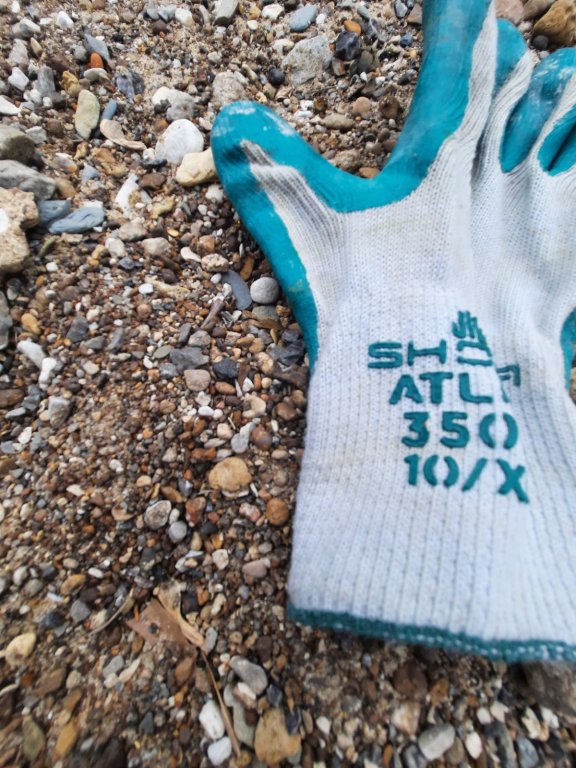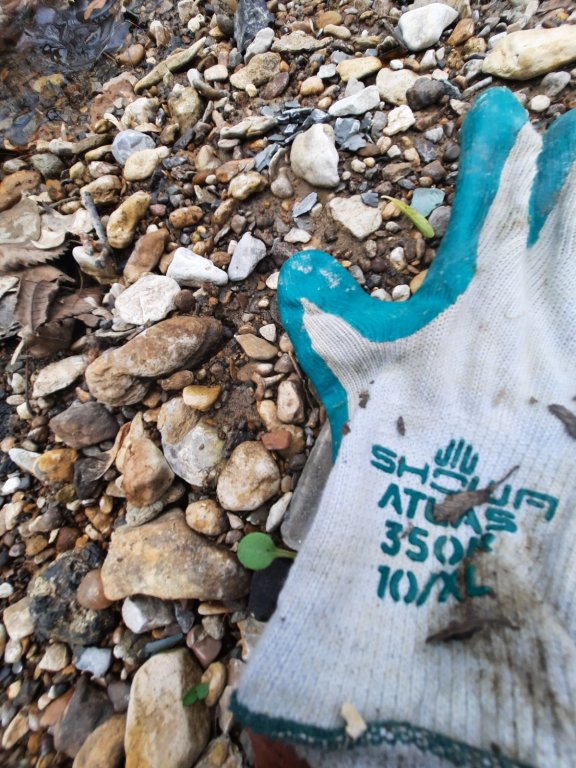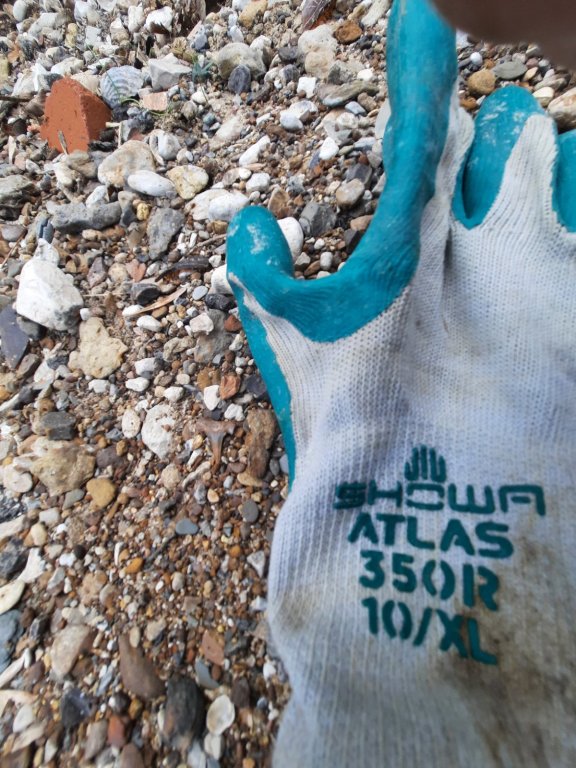I ended up with 10 rides on the bike in December for 280 miles. The weather was mild much of the month, and 6 of those rides were outdoors. My left knee cratered in the middle of the month, and so did my mileage the rest of the month. I wasn’t able to ride at all the last week of the month. I’ve had problems with both knees in recent years. They both pop so loudly that you can hear it across a room. It’s pretty obvious there isn’t much cartilage left, and they are both going to need to be replaced. I’m hoping that still a ways down the road. But it was frustrating, finally being healthy enough otherwise to ride, but having my knee preventing me from doing it. I’m hoping for a better riding year in 2022. I ended up with 2,857 total miles ridden in 2021, easily my lowest total annual mileage since I started riding in 2004.
Post Oak Creek – December 27th
I went back to Post Oak Creek yesterday, and hunted yet another part of the creek I hadn’t seen before. The water is still really low, so there is less wading than usual although, with the temperature in the low ’80’s that afternoon, wading wouldn’t have been a problem. I torqued my bad left knee first thing as I climbed down into the creek, and was hobbled the rest of the day. I found everything on the gravel bars yesterday, though I did look at some interesting outcrops too. Post Oak Creek is as fossiliferous as any place I’ve ever seen.
I called it after around three and a half hours of hunting. I always manage to get dirty and muddy, crawling the gravel bars and climbing in and out of the creek, and I must have really looked like a homeless person, as I hobbled back toward where I parked, backpack on and walking stick in hand, because a woman in a white SUV stopped, got out of the vehicle, and asked me if I needed a coat. I said no, and she asked me if I was sure. I assured her I didn’t need a coat. She looked unconvinced, and did not move her vehicle until after she watched me cross the road and climb into my brand new truck.
Some in situ photos. Click the photos to be able to zoom in and get a closer look.

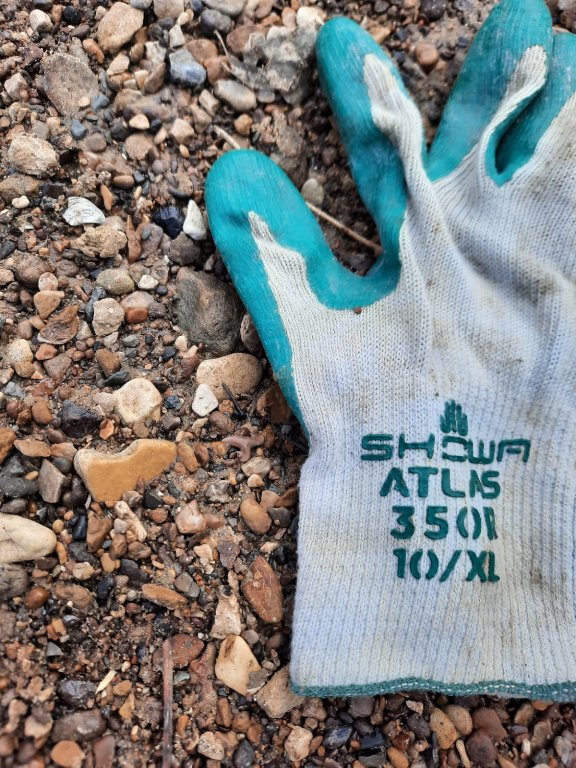

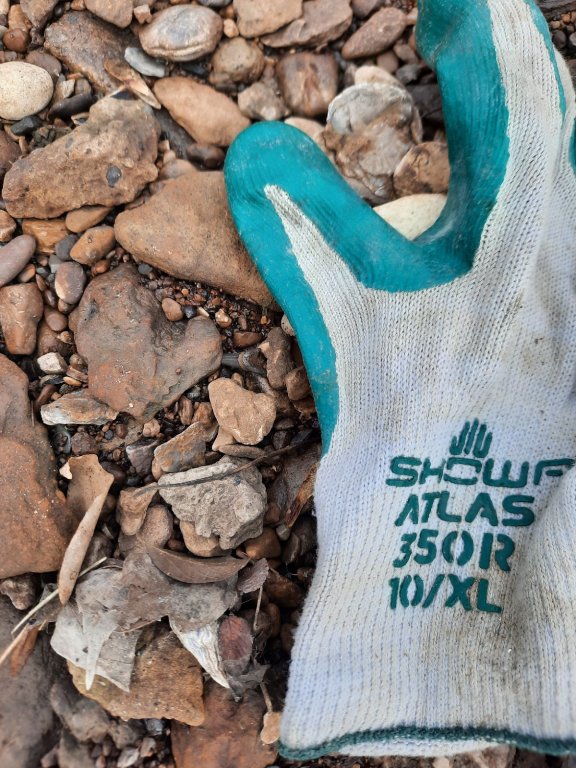
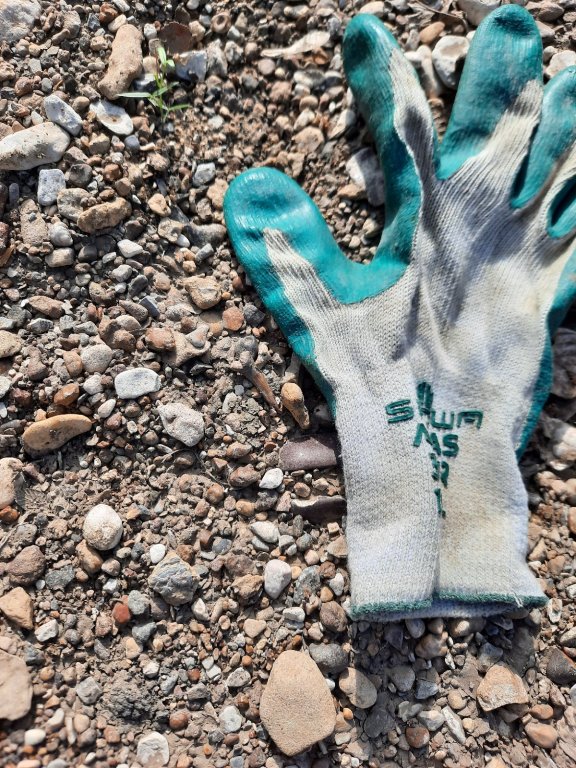
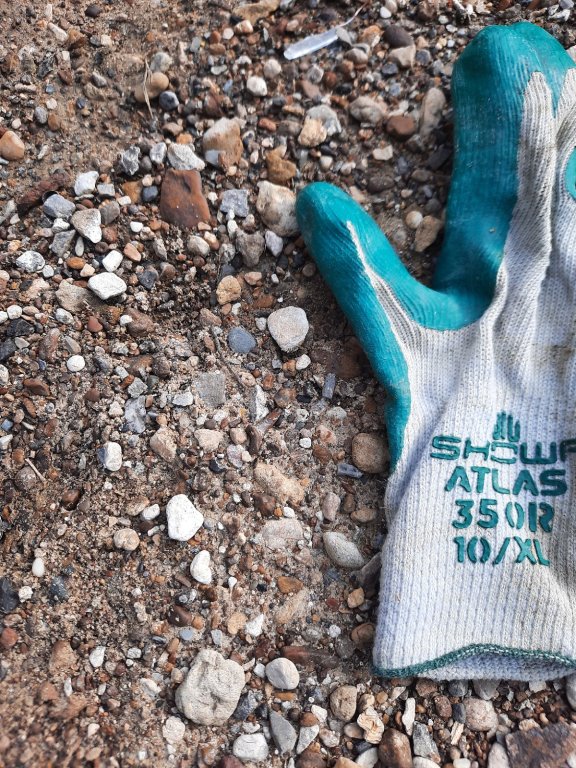
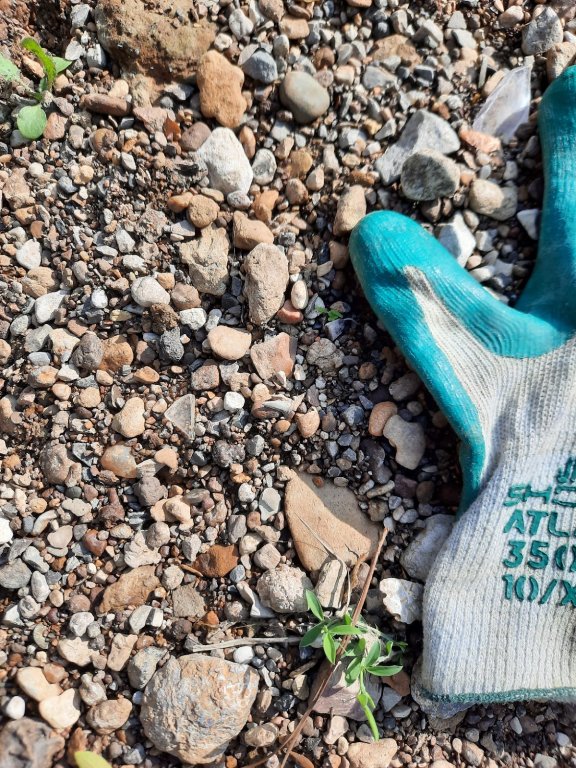
Here is what I brought home. There were 99 teeth, counting the bison tooth. Guess I should have hunted long enough to find one more.

The largest shark tooth of the day. A beauty. It’s a shame that half the root is missing.
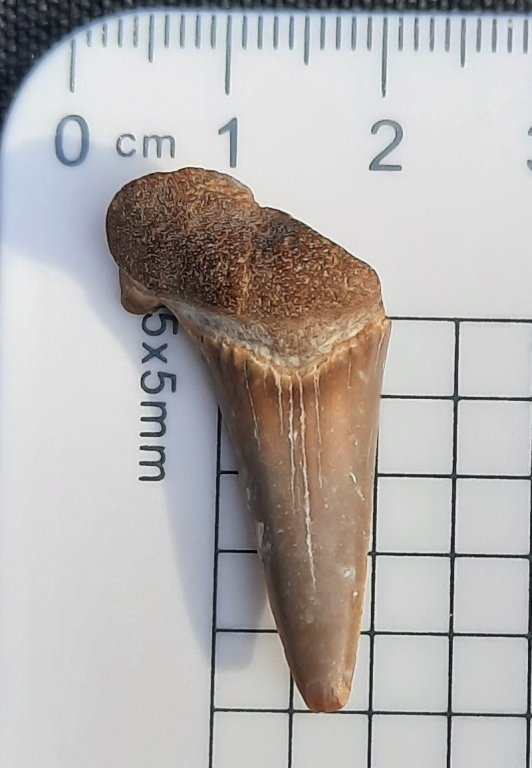
There are always modern mammal teeth to be found on these gravel bars. I found a bison tooth yesterday. But this one is different. Besides being much smaller than a bison or cow tooth, it appears to be at least partly fossilized. I have no idea what it is. I’ve asked in The Fossil Forum.
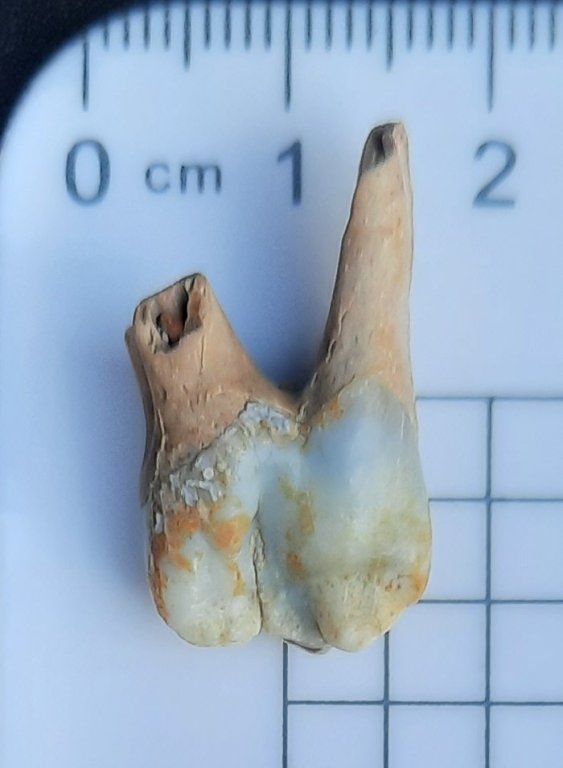
This tooth is still embedded in a piece of matrix.

The only Ptychodus tooth of the day. Either the parts of the creek I have hunted don’t have a lot of Ptychodus teeth, or they have already been hunted by someone with a better eye for Ptychodus teeth than me.
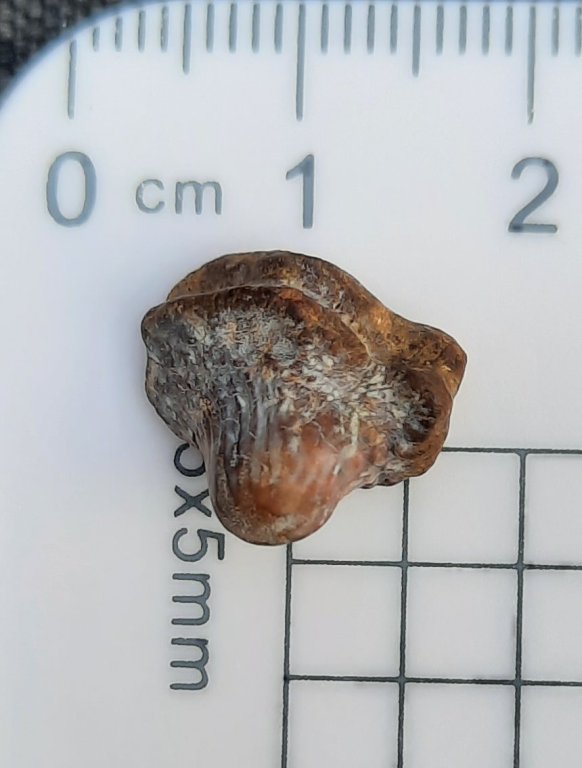
This looks to be some kind of tooth, including part of the root. But it doesn’t have the shiny enamel of a shark tooth, so I’m not sure what it is.

I thought these four were the prettiest of the smaller teeth.


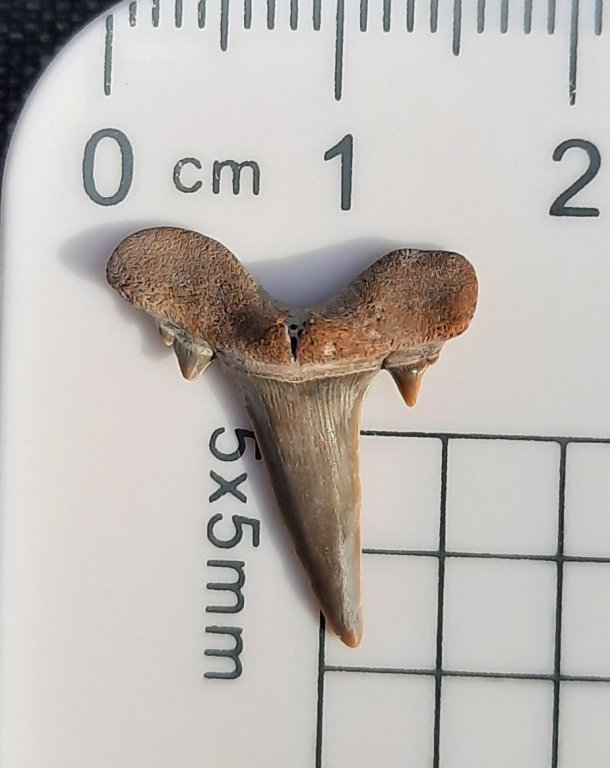

I’m surprised that I was able to find some of these really tiny teeth on those rough and tumble POC gravel bars. I must be getting better at spotting them. And how did the point of teeth as tiny and sharp as these two keep from getting broken on those gravel bars?
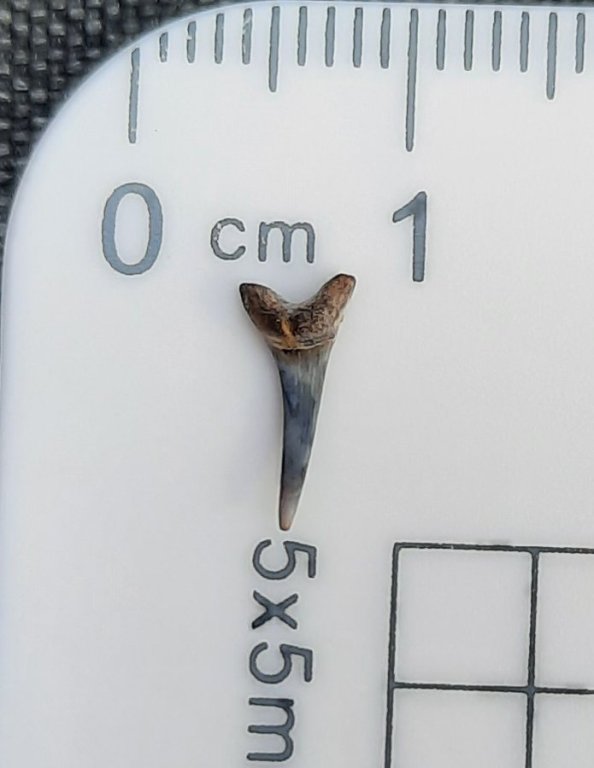
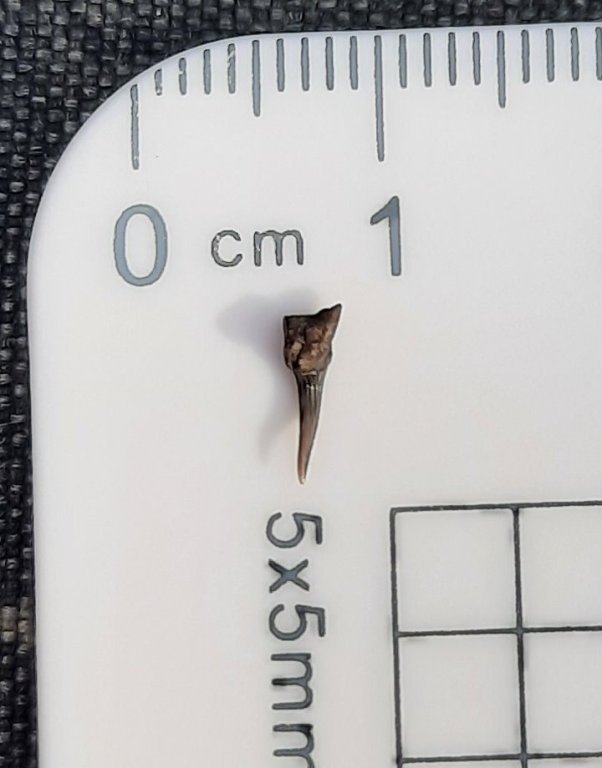
I thought this one was interesting. Lots of root, with a tiny, curving tooth.

This broken small round tooth looked like a mosasaur tooth to me. It was identified as a sawfish rostral tooth on The Fossil Forum.

The size of the bison tooth reminds just how big those creatures are.
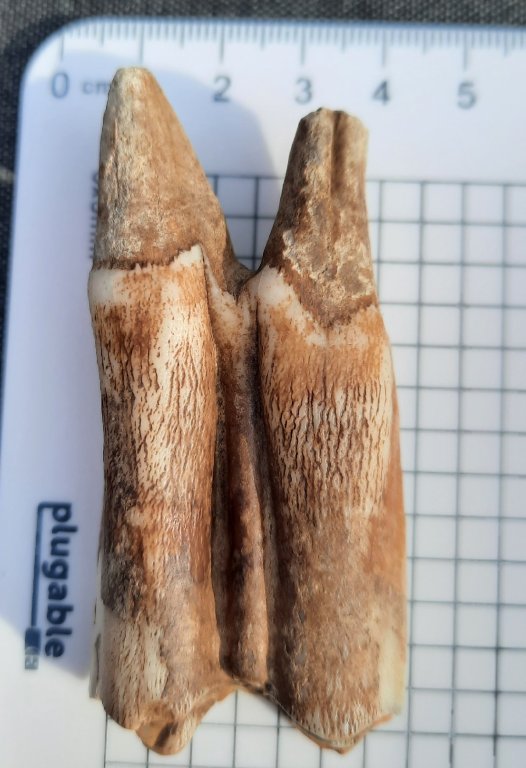
This bone looked interesting enough that I picked it up, but I have no idea what it is.

Post Oak Creek – December 15th
I spent yesterday morning at the North Sulfur River. I had never made a trip to the upper part of the river, and decided to do that yesterday. I spent all morning walking (and crawling) the river, but found nothing. When I try out a new spot, I’ve made it a practice to find a nearby second spot to look at, in case the first one doesn’t pan out at all. Sherman isn’t too long a drive to the west of this upper river spot, so I designated a new section of Post Oak Creek that second spot, and drove there after I left the river.
I wasn’t too optimistic about what I might find in this new section of Post Oak Creek. The conditions and cirmcumstances seemed all wrong. I didn’t arrive there until after noon. Post Oak Creek is a long enough drive from home that I knew I wouldn’t be able to stay long. Plus, it’s been quite a while since there was a good rain here. Post Oak Creek gets very picked over when there isn’t new water uncovering stuff. But I figured if I found anything at all under these conditions, that would let me know this is a good spot, and I should return after a good rain.
I also had the thought that if I didn’t find much on gravel bars, I would spend some time searching matrix here. I had never done that at all at Post Oak Creek. I hiked down the creek and hunted a single gravel bar. I never made it past that gravel bar, and ended up finding much more than I expected, and only briefly looked at matrix there. For those so inclined, here’s today’s version of “Find the fossil”. Click the photos to be able to zoom in and get a closer look.

I actually took 14 in situ photos, but culled to these 8 to post.

Here is what I brought home. I shouldn’t pick up so many broken teeth, but I can never seem to resist a fossilized tooth.

Here is the first of the two largest teeth. These are among the largest teeth I’ve found in my short time fossil hunting.

And here is the other larger tooth. Neither of these teeth is in perfect condition. But, considering how many teeth I’ve found this year that were so small they required a microscope to photograph, I was still thrilled about finding these two.
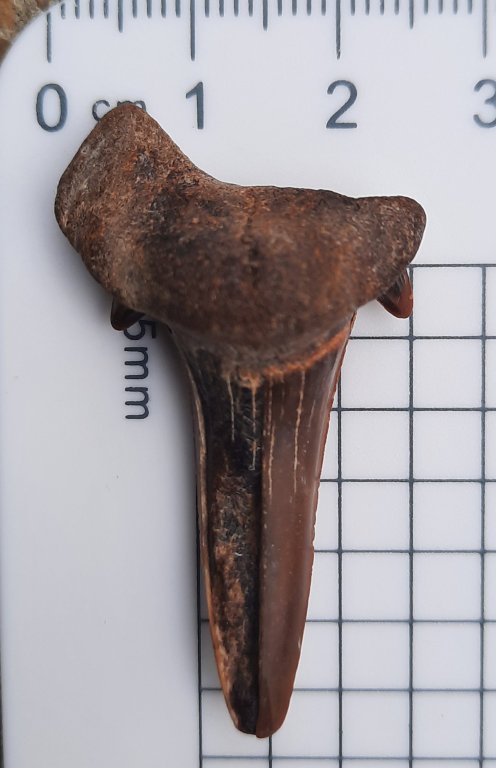
Lots of cracks in this one, but it’s in one piece, with the root intact. A real beauty, I think.

The only Ptychodus tooth of the day.

Half the root missing, but still a pretty tooth.

This looks to me more like a crinoid segment than anything else, though I’ve never found crinoids in this area before. The thought in The Fossil Forum is that it really is a crinoid segment, and came from further west, brought in with construction material.
This is plainly a bone, but I can’t tell what it’s from. Perhaps someone in The Fossil Forum will recognize it.

This bone is as brown as any fossilized bone, but the porous part of it hasn’t become completely filled in yet, so I assumed it must be a modern bone. It seemed like a good candidate to take home and do the flame test on. A flame didn’t produce any smell, but I did eventually get smoke.

And this is obviously a modern bone, but it was so interesting looking I picked it up anyway. I had no idea what it was. It was ID’d in The Fossil Forum as pharyngeal teeth from some kind of fish.

With my short time at the end of the day looking at matrix, I found these two teeth. I also spotted a couple of gastropods in giant rocks, but freeing them would have taken more chiseling than I was willing to tackle that late.
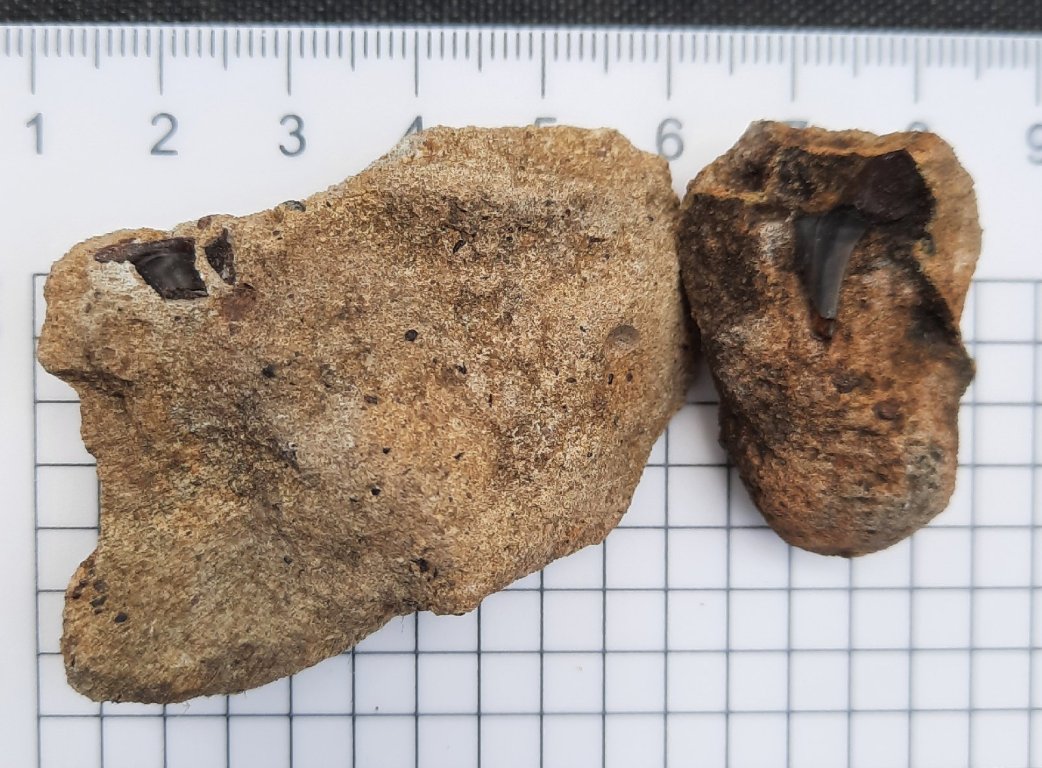
Navarro County creek – December 8th
I made another trip yesterday morning to the Navarro County creek I visited a couple of times in the last few weeks. I had found everything I brought home last time on gravel bars, but ran out of time, and never got to search some good looking gravel bars downstream. Those gravel bars are actually a shorter hike than the ones I found fossils on, so I’ve been wanting to come back. I ended up being very disappointed in those new gravel bars. I found nothing. I finally hiked on up the creek to the gravel bars where I’d found stuff last trip, and hunted them again.
The day didn’t produce a lot. Most teeth were just broken pieces. Here is what I brought home. Click the photos to be able to zoom in and get a closer look.

Here are a couple of in situ photos.
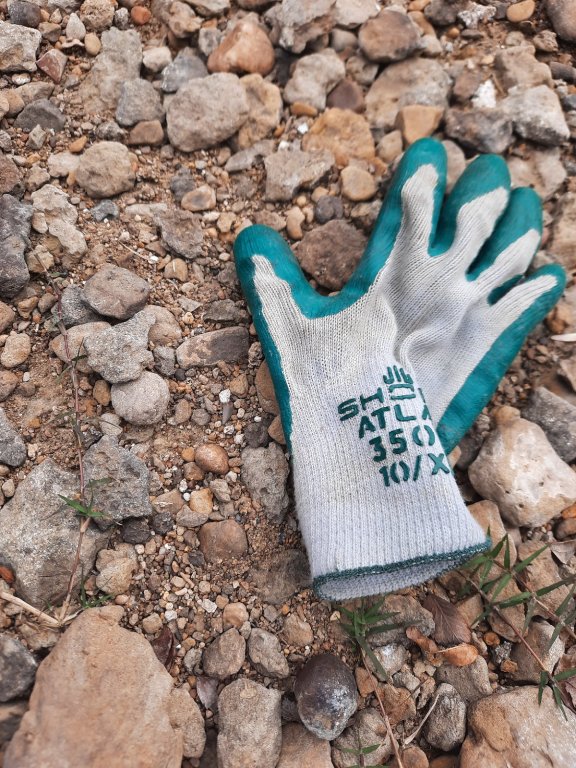
Here is the tooth in that first in situ photo, no roots left at all.

And the tooth from the second in situ photo, with just one root.

Here’s the largest tooth of the day. No roots, plus the tip broken off.
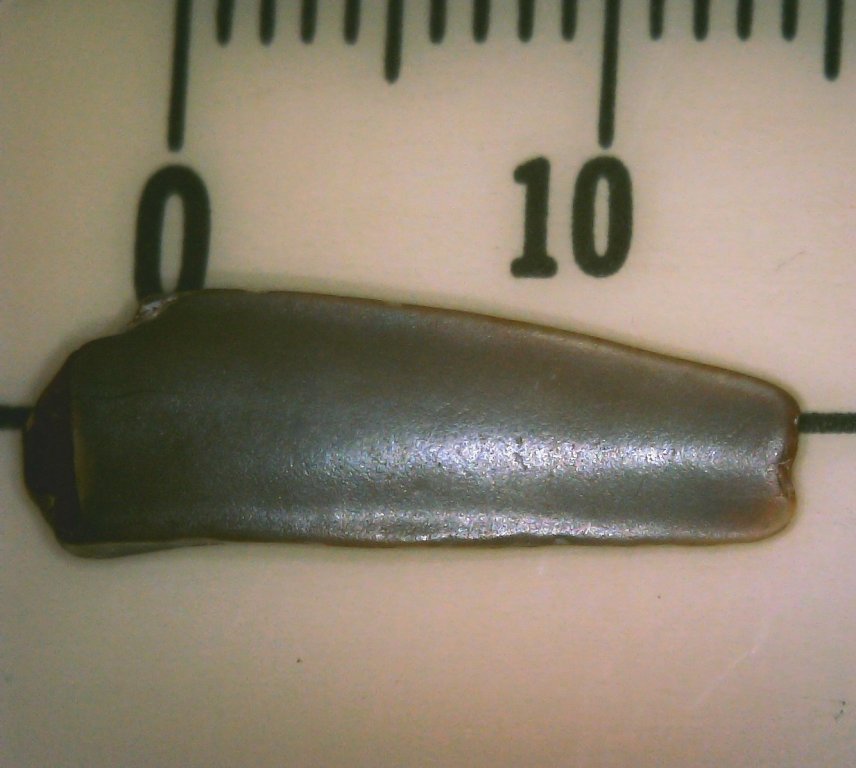
This bacculite looks a lot like those you find at NSR, except tumbled a lot more.

I so rarely find complete, or almost complete ammonites, so it seems ironic that in this creek, where all the teeth are broken into pieces, I find this guy.

And then there’s this. Here are three views. That’s a Tic Tac I used to prop it up in the first photo. The last photo is a view of the back side. It kind of looks like a piece of jaw bone with two teeth, one of them very tiny, on it. It may be Enchodus.

Fall Riding
December has arrived, so it’s time to start riding the trainer, rather than actual road miles. But I’m hoping to get in a couple of road rides later in the week, while the weather stays mild. All of my rides in September, October, and November were on the road, except for a single trainer ride on November 15th.
I had a good mileage month in September, with 12 rides for 390 miles. October wasn’t bad, either, with 10 rides for 300 miles. I made more fossil hunting trips in October. In November, I only ended up with 7 rides for 220 miles. Trips to the dentist, fossil hunting, Cancun, and buying a new truck all took their toll on my mileage.
But my health has been much better. My COPD seems to be well controlled by inhalers; I’m not wheezing at all now. I’m still over one mph slower on the bike than I was in 2020. Perhaps I can gain some of that back next year. I hope to tackle some longer rides as I get stronger, but probably nothing too long. I’m just doing rides of up to 40 miles right now.
Cedar Creek Lake – November 19th
Like I’ve posted before, when I started this blog, it was mainly about my cycling, while being a lung cancer survivor. There are very few lung cancer survivors who are serious cyclists, so I thought my perspective would be unique. And I did all kinds of fun and exciting organized rides, so had cool things to post about. But after I moved to Gun Barrel City in 2013 and started just mostly doing solo rides on weekdays, my blog slowed down a lot, as blogs have a tendency to do. And trying to recover from COVID, plus adding fossil hunting and its sometimes arduous hiking as a hobby, I started riding fewer miles, and not really setting mileage goals and tracking miles any more. So even that went missing from the blog. So now, I have decided to add some fishing posts to the blog. I added a fishing category years ago when I bought a pedal kayak that much resembles a recumbent bike pedaling position, but never made many fishing posts. But now that I’m retired, I’m fishing more than ever, and having a blast at it. Fishing has been a passion my entire adult life, as well as designing and making baits. I still have lure molds I purchased in the ’70’s. I’ve done some posting about my fishing and lure making over on the Texas Fishing Forum. Maybe I’ll migrate some of that here, like I did with cycling and fossil hunting forum posts. We’ll see.
For 25 years, starting in 1981, I was a passionate bass tournament angler. I had a lot of success at the club level, only limited success above that. I quit tournament fishing in 2006. I got tired of the competition, and wanted to make my fishing less intense. And my shoulders and back were so bad, as well as the arthritis in my fingers, moving to crappie fishing seemed like something my body would tolerate much better, and that is what I did. For quite a few years, almost all my fishing was crappie fishing. But as I started working fewer hours, and finally retired this year, my back and shoulders are much better. And with the lighter equipment and gentler techniques I use these days, I’ve started bass fishing again. Many trips these days, I’ll spend some time crappie fishing as well as some time bass fishing.
And that got me updating bass lures I make, plus adding new ones. Last Friday, I got reminded of how much I’m loving the new 5″ finesse worm I’m making when I caught this bass which weighed almost six pounds.

Since the mid ’80’s, my favorite plastic worm had been a four inch ringworm in fire and ice color. As much as I loved that fire and ice color, I could never catch many fish on it with any other style worm. It took me a long time to figure out that the translucency of that worm was a large factor in that. The main body of the worm is so thin, and the ribs are also really thin, so the entire worm is very translucent. No other fire and ice lures I tried were that translucent. But my worm fishing style these days, with a shaky head jig, are more suited to a finesse worm than that old ringworm. So I knew it was time for a new worm. But fire and ice has long since fallen out of favor with fishermen, so there are absolutely no fire and ice finess worms to be found.
I finally used an Amazon gift card early this year to purchase a couple of molds, and started making my own finesse worms. The six inch Do-It finesse wom mold I bought makes a worm too thick for fire and ice to be an effective color with it. I made a few and tried them, but I also made those worms in a green pumpkin color, and that proved to be a better color for them. The other mold I bought was a five inch finesse worm called a Flirt, made by Bug Molds. That worm is really thin, and seemed to be a better candidate for fire and ice. I made the worm in both green pumpkin and fire and ice. Both caught fish, but the fire and ice REALLY caught fish. I’d found my new bass worm. Here is the worm rig I throw these days.

You can’t get a decent feel for the color by looking at that photo. Professional photos the worm manufacturers take give a better idea, but even they don’t really convey well what that worm will look like in sunlight. The worm in this photo is out of focus, but it shows how translucent my finesse worm is.

I throw that worm on a seven foot rod, a size 15 spinning reel, and 10 pound test braided line. It’s pretty much the same thing I crappie fish with, except that Mojo Bass rod is stiffer than any of my crappie rods. But like my crappie rigs, it’s a setup that easy on an old man body. The fire and ice color is laminated, purple with blue glitter on one side, and purple with red glitter on the other. My version of fire and ice isn’t laminated, it’s just purple with red and blue glitter added. With a worm this thin, I don’t think laminating is really required to get the color right.
Week before last, I bought a new truck, a brand new Ford Ranger. Now that I’m retired, a pickup seems much more of a fit for me than the Mercedes Metris cargo van I used for work. With its small tires and low ground clearance, I was always paranoid about getting stuck when I parked off road on my fishing or fossil hunting trips. I installed a hitch in the truck last Tuesday, and Friday was my first time towing the boat with it. It did great.

Friday, I spent the morning crappie fishing under a bridge. It was pretty chilly in the shade of that bridge, and when I let the boat drift out into the sun for a lunch break, I realized it was much more comfortable in the sun on that day. So I decided to spend an hour or so bass fishing. I started out throwing a crankbait. Two years ago in the fall, a crankbait did great on this lake. But Friday, I couldn’t muster a single bite on one. So I picked up the finesse worm and threw it for a bit. I caught two bass, the first one being the beauty in the photo. It was a tough day. I only caught eight keeping size crappie, and two bass. But when one of the bass looks like the one above, and three of the crappie were so big, they were plenty more than enough for a meal, and their fillets would barely fit in a pint zip lock bag, I won’t complain.
Navarro County creek – November 18th
I made a trip to a Navarro County creek Thursday morning. This is the same creek I visited a few weeks ago, but I was a little bit further downstream Thursday. It was still a Wolfe City formation area. It ended up being one of those days where I spent more time hiking and exploring than I should have. I was looking for likely outcrops in this creek, and just didn’t find any. I eventually started checking the unlikely looking ones closely, but never did find any fossils that way. I finally spent some time crawling gravel bars, and found a few things there. I’m still a relative newbie at this, but in my limited experience, I’ve had better luck finding fossils in good shape in outcrops than on gravel bars. This day was no exception; what I found on the gravel bars was in rough shape.
The best gravel bar was less than a half mile downstream from the outcrop where I found everything last time I was in this creek, but it was obvious that Thursday’s teeth didn’t come from that outcrop. All of the teeth from that outcrop were black; Thursday’s teeth were brown. I found myself wondering where the outcrop was where they came from, if it was covered with mud and would show up again next flood, or if I had just missed it in my searching. I didn’t leave myself much time for crawling gravel bars Thursday. I want to hunt this area again. Thursday’s haul was pretty sparse, and in rough shape. Click the photos to be able to zoom in and get a closer look.
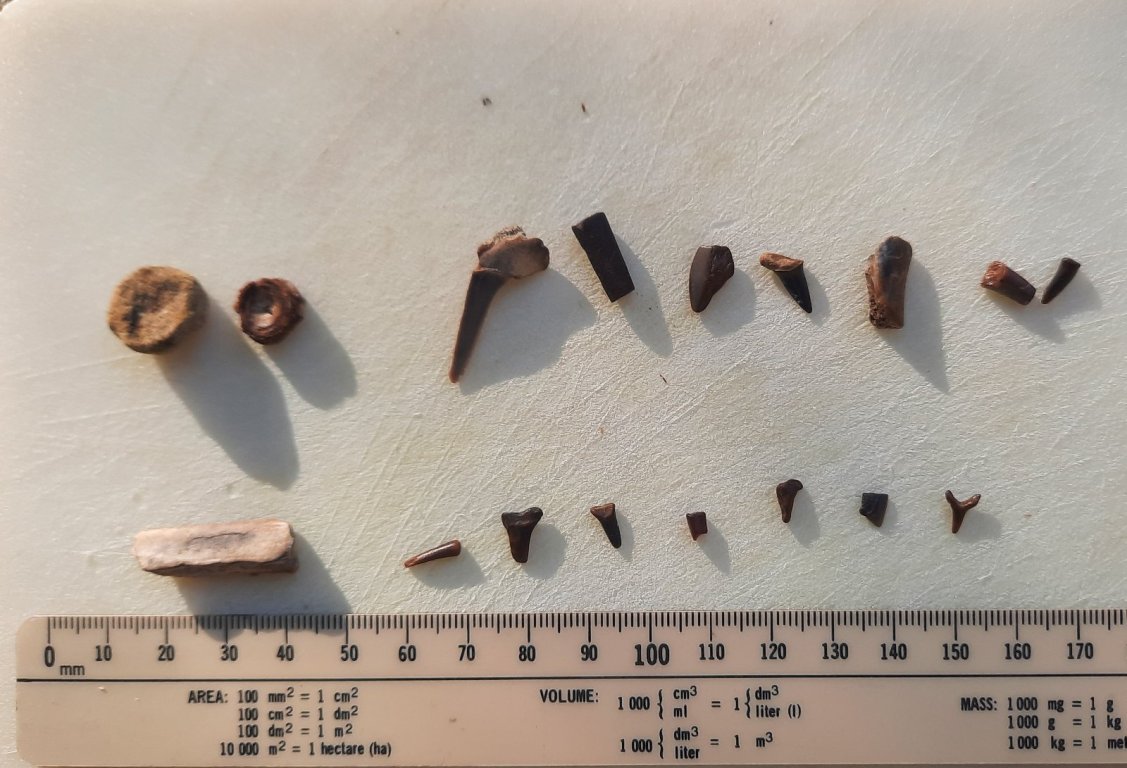
Here are a couple of in situ photos. You’ll have to look very closely to see the fossil in that first photo. Hint: it’s really close to the glove.
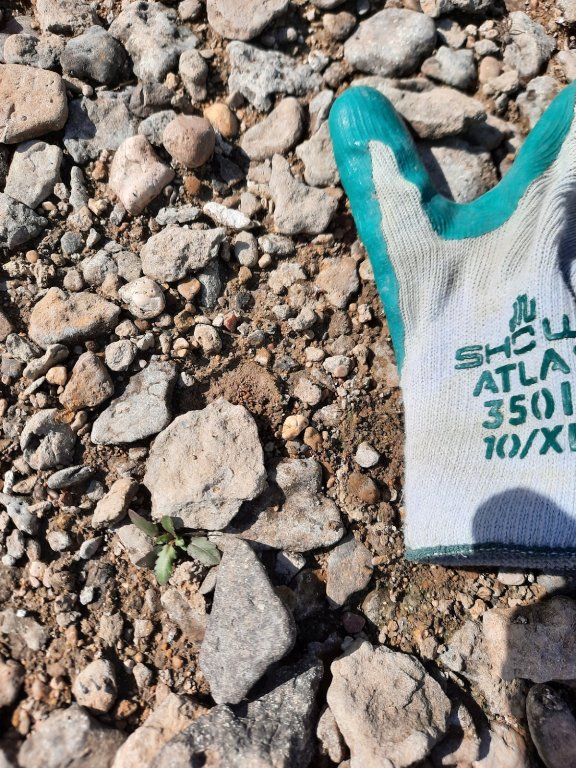

Here’s the tooth from the second in situ photo. When I saw that in situ view, I thought I had found a beautiful tooth, half buried in gravel. It turned out the half of the tooth I was seeing was all there was. It had split in two.

This tooth from the first in situ photo is in better shape than anything else from the trip. A pretty little tooth.

This appears to be a piece of an Enchodus fang.
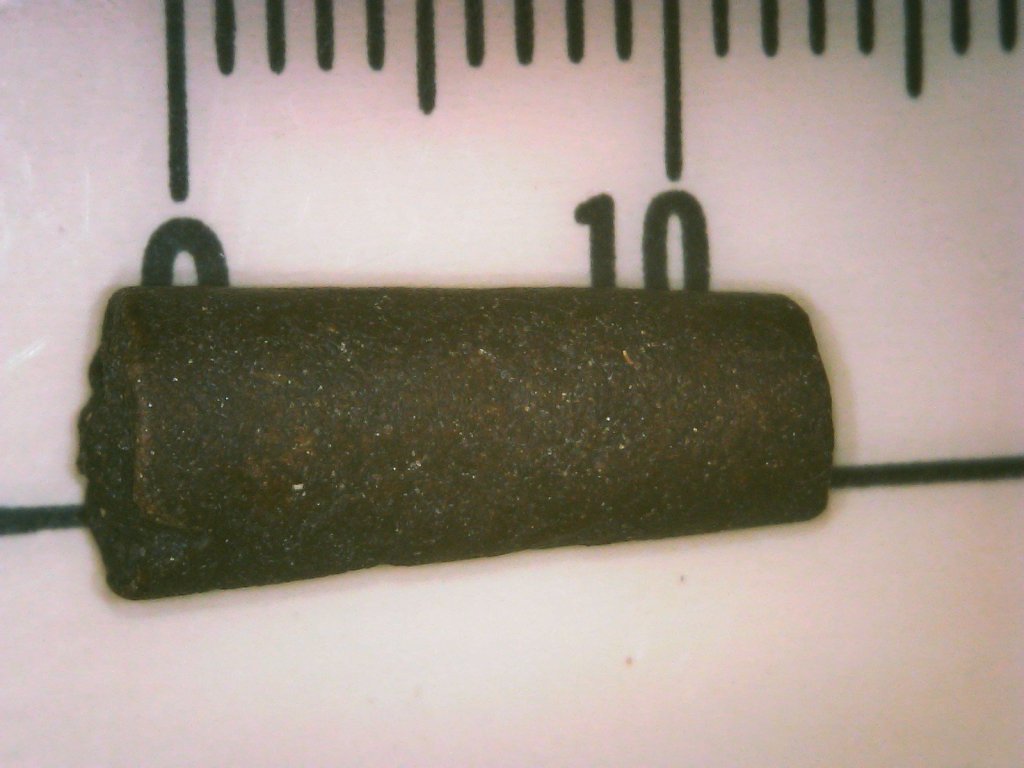
This Squalicorax tooth isn’t just broken, it’s also worn to the point that there aren’t any serrations left.

This smaller Squalicorax tooth is also broken, but still has serrations.
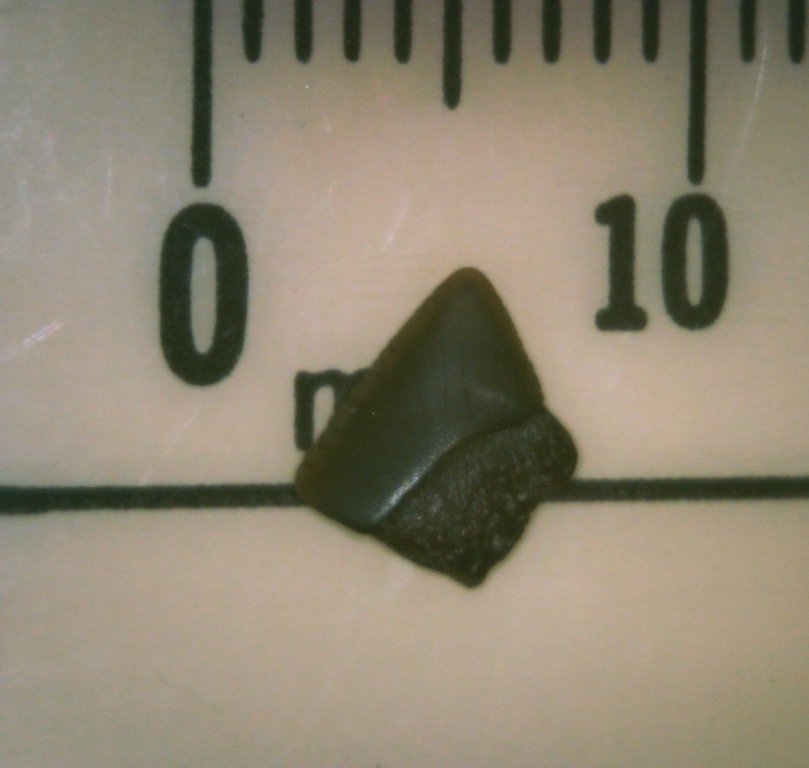
Not enough left of this long and slender tooth to tell what it is.

This one has obviously done some serious tumbling on the rocks
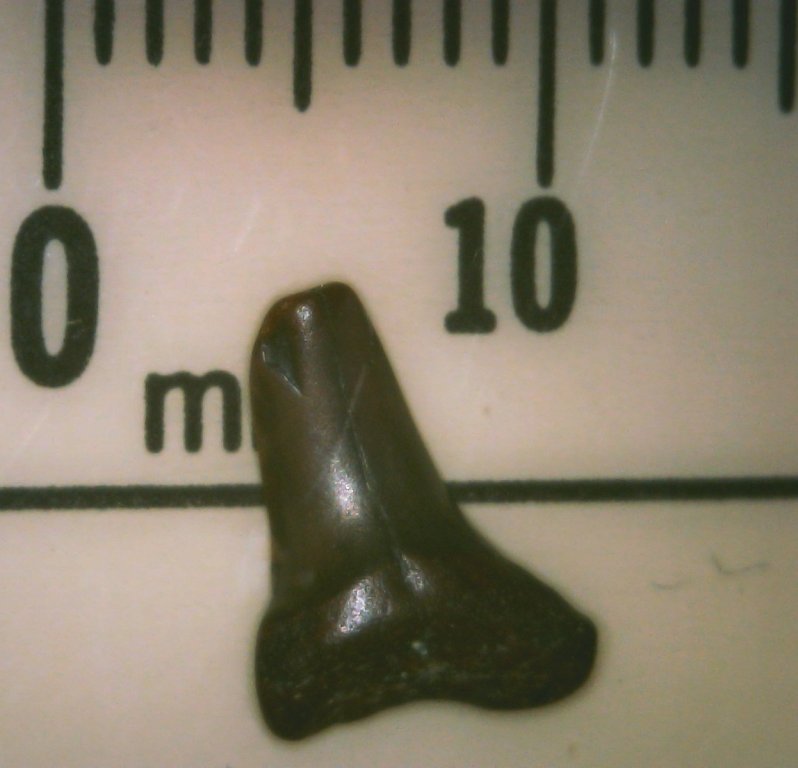
One root missing from this one.
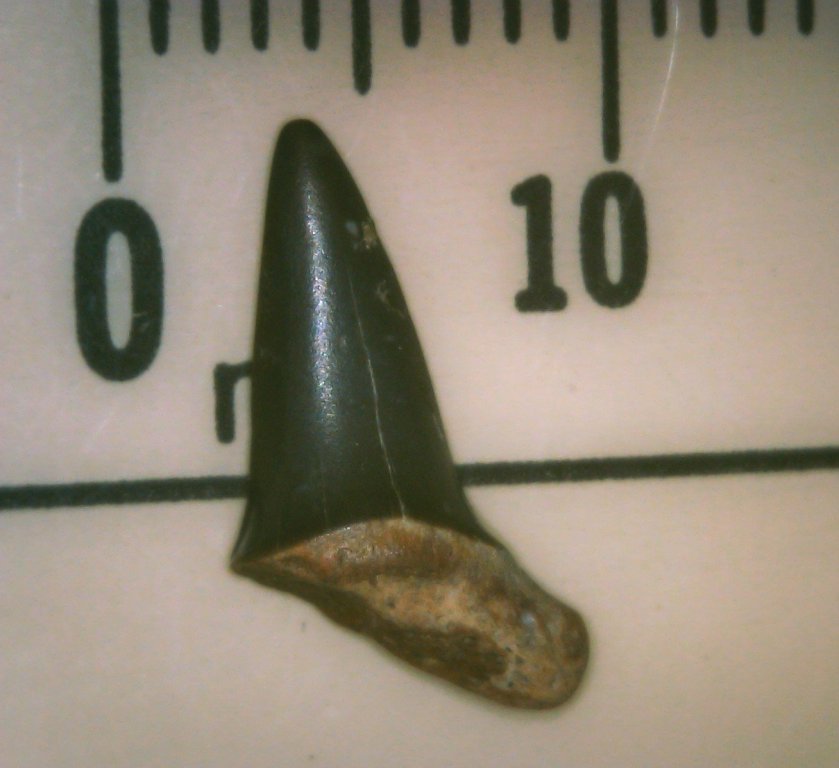
I thought this was a broken part of a large tooth, but the view of the break in that second photo makes it look more like a bone.

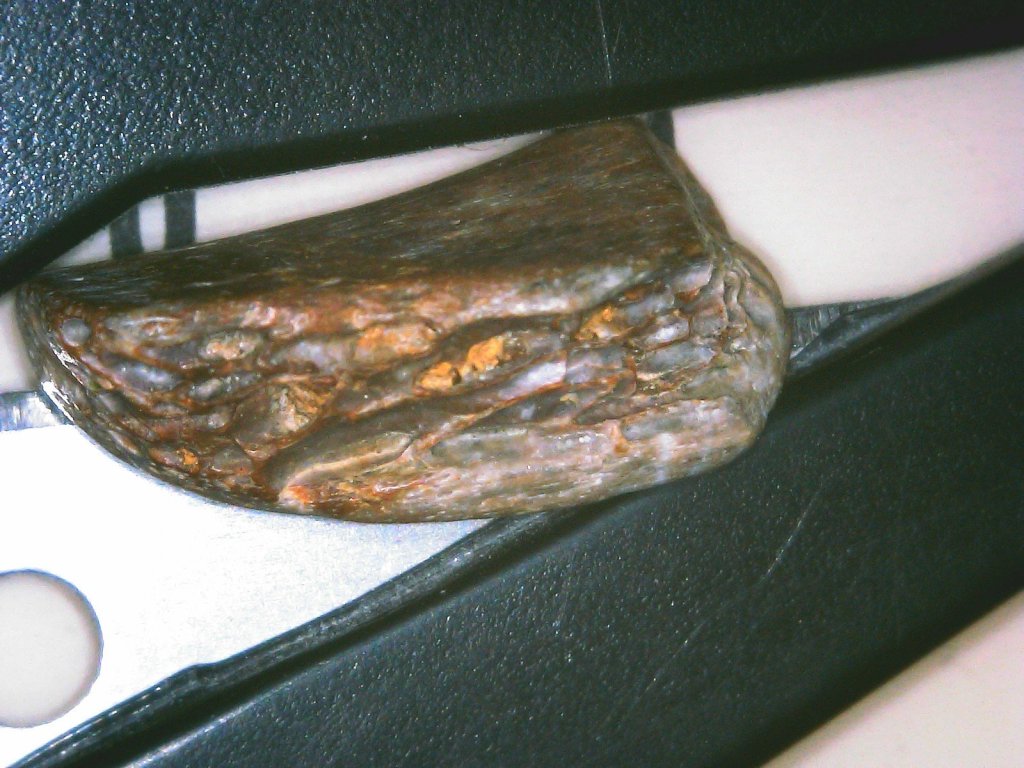
I thought this was a bone. Here are views of both sides.


But someone over at The Fossil Forum recognized it as a piece of a mammal tooth. Looking at this end view, that’s obviously correct.

This smaller fish vert shows the effects of tumbling on the gravel. The larger one is covered with so much matrix that I almost didn’t recognize what it was.

DFW creek, – November 8th
Last Monday, I had a dentist appointment in the morning in Dallas. I left afterward and drove a few miles west to check out a new creek. This part of the creek is mapped as Eagle Ford, but the few fossils I found all appear to have come from a red zone in the outcrop that I’ve never seen in an Eagle Ford area before, only Ozan. But in this part of DFW, Austin Chalk is between Eagle Ford and Ozan, and they are miles apart. Experts in The Fossil Forum inform me that this is the Britton part of Eagle Ford.
Here are the ammonite pieces I found. Click the photos to be able to zoom in and get a closer look.
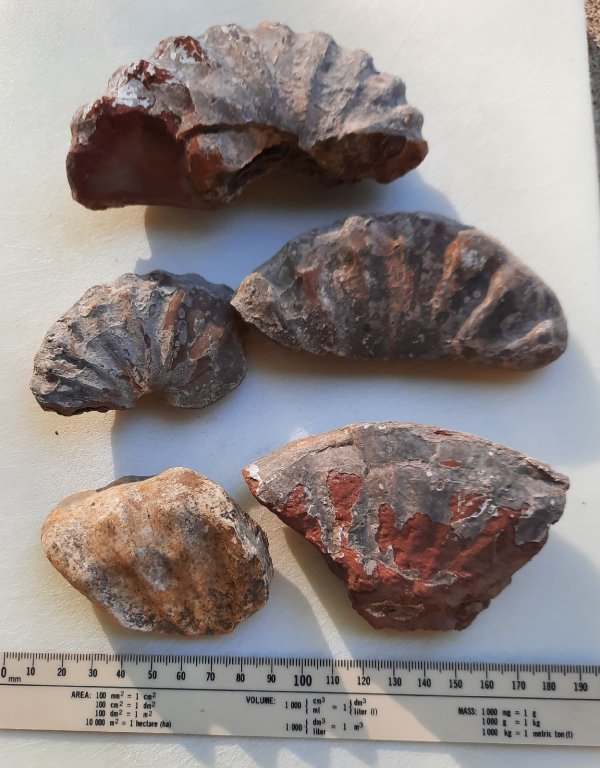
And these two bacculite pieces.
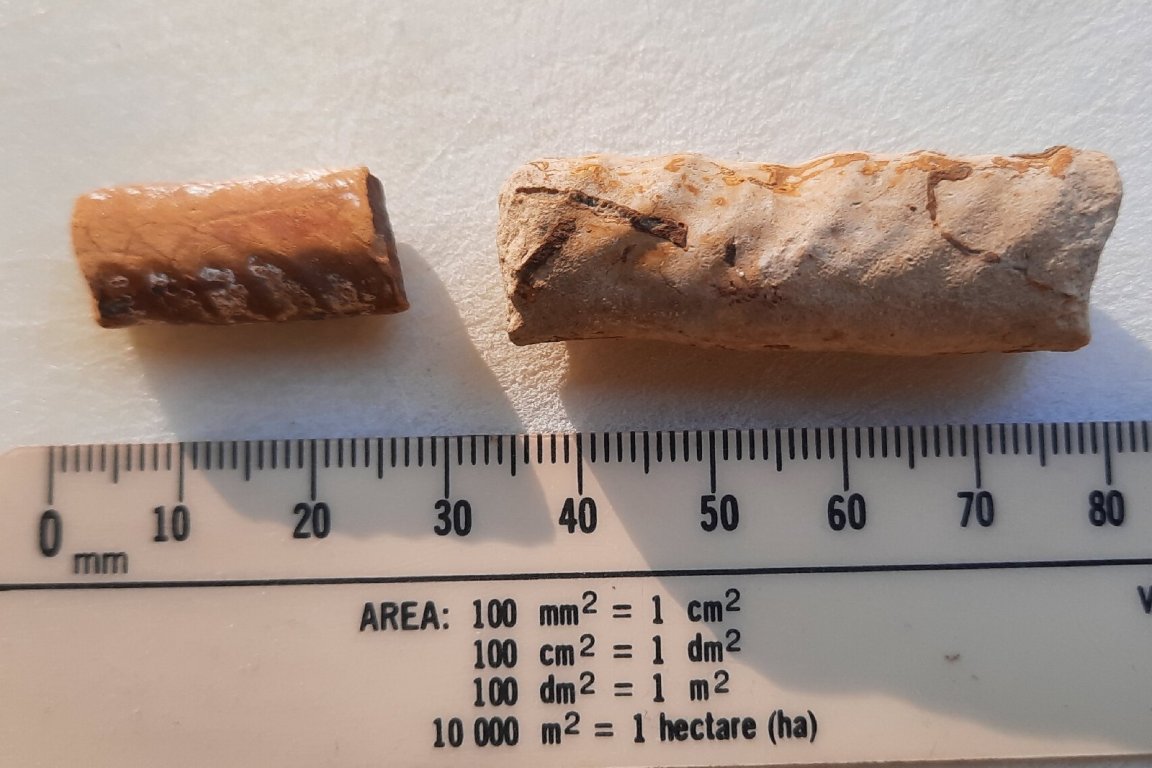
I liked this ammonite imprint in this rock.

This imprint is a heteromorph ammonite.
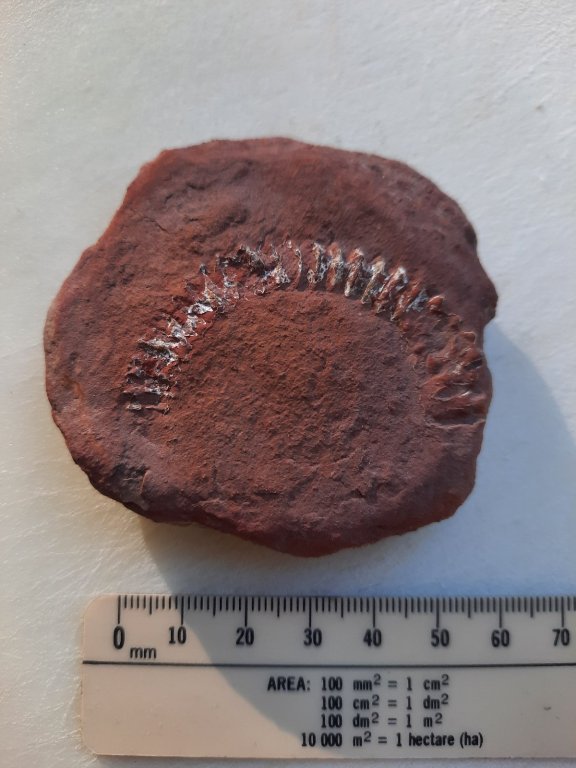
While this is clearly a fossil, I had no idea what it was. It turns out it is fossilized crustacean droppings, used to line a burrow.
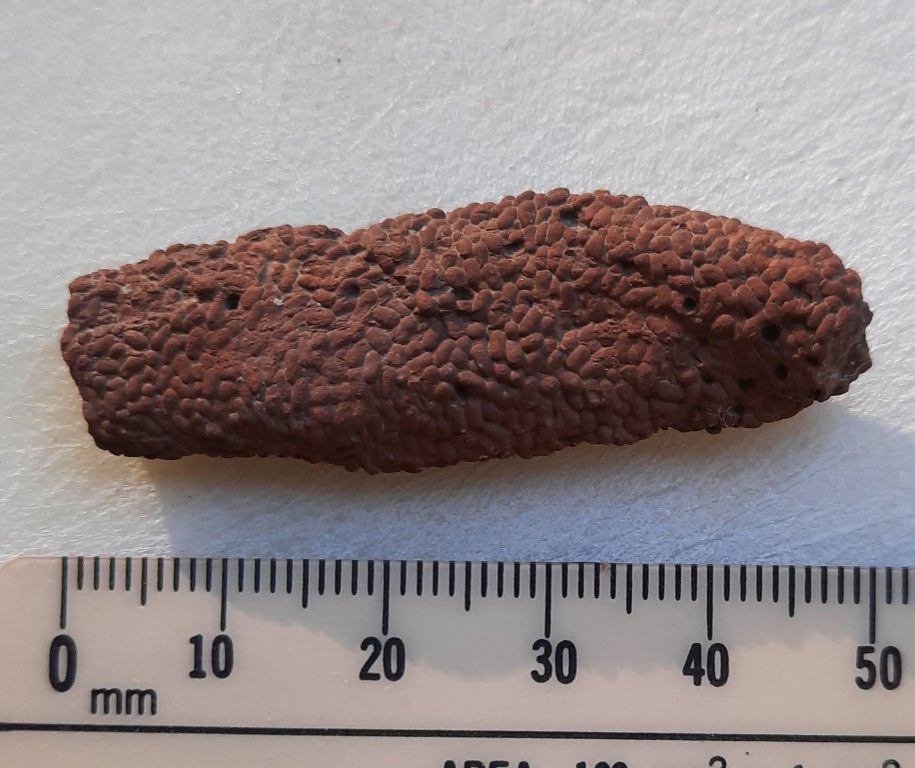
Navarro County creek, October 26th
I live near the western edge of Henderson County in Texas. It’s a fairly flat area with few outcrops of any kind exposed, and even when they are, they aren’t very fossiliferous. The county just west of me is Navarro County, and it does actually have some formations that hold fossils. But I haven’t had much luck finding anything in Navarro County. I keep looking, since it’s so close. I did a long hike down a Navarro County creek yesterday. For most of the day, it looked like another of those trips where I just don’t find anything. But one thing I’ve learned about fossil hunting is that even after hours of unproductive searching, it only takes one small spot to make you end up bringing home some cool stuff. Yesterday, I eventually found that small spot.
The area I hunted is Wolfe City formation. I just didn’t have any luck finding anything in the gravel bars in the creek, or in the outcrops themselves. But I did stumble on an outcrop that had some fossils in the mud just below it. For those who enjoy “Find the fossil”, here are some in situ photos. That pick is small. The handle is about 55 mm long. Click the photos to be able to zoom in and get a closer look.
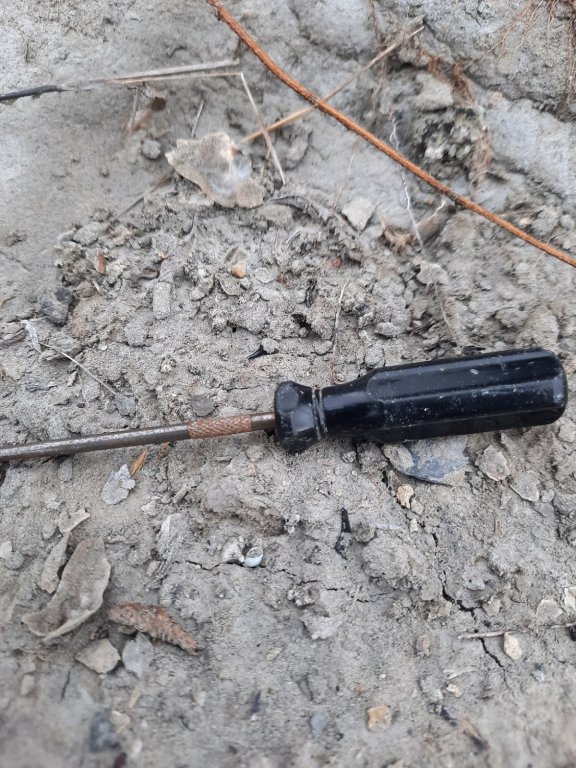


And here is what I brought home. Excuse the quality of my photos today. It is very dark with serious rain outside, so I did the best I could for lighting indoors.
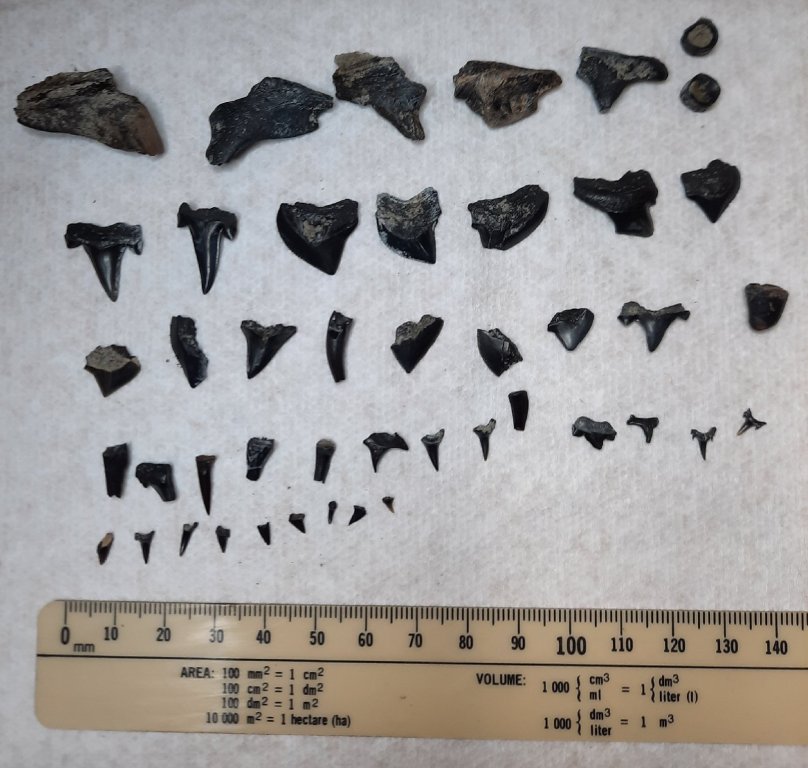
There were some interesting bone bits. These first four all look like Enchodus jaw pieces to me, including part of a fang.
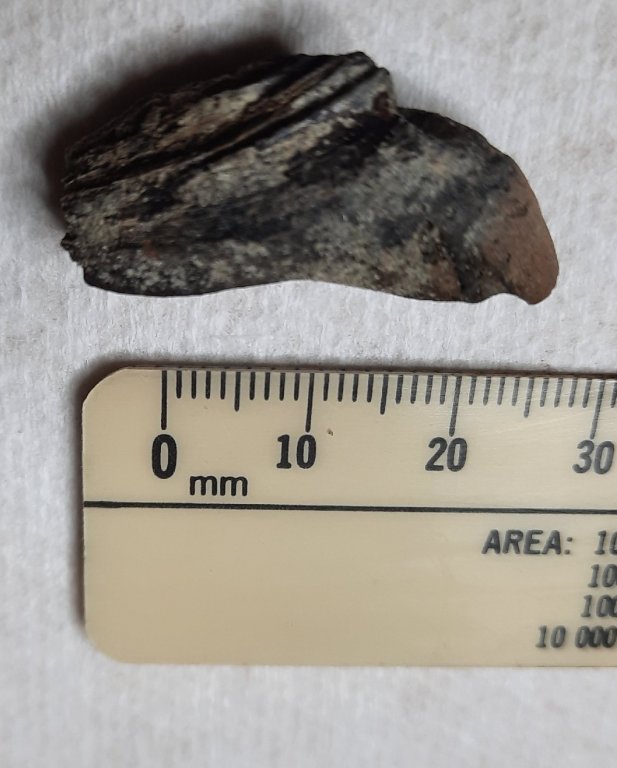



This is an interesting bone bit, but I’m not sure what it’s from. I took a photo of each side.
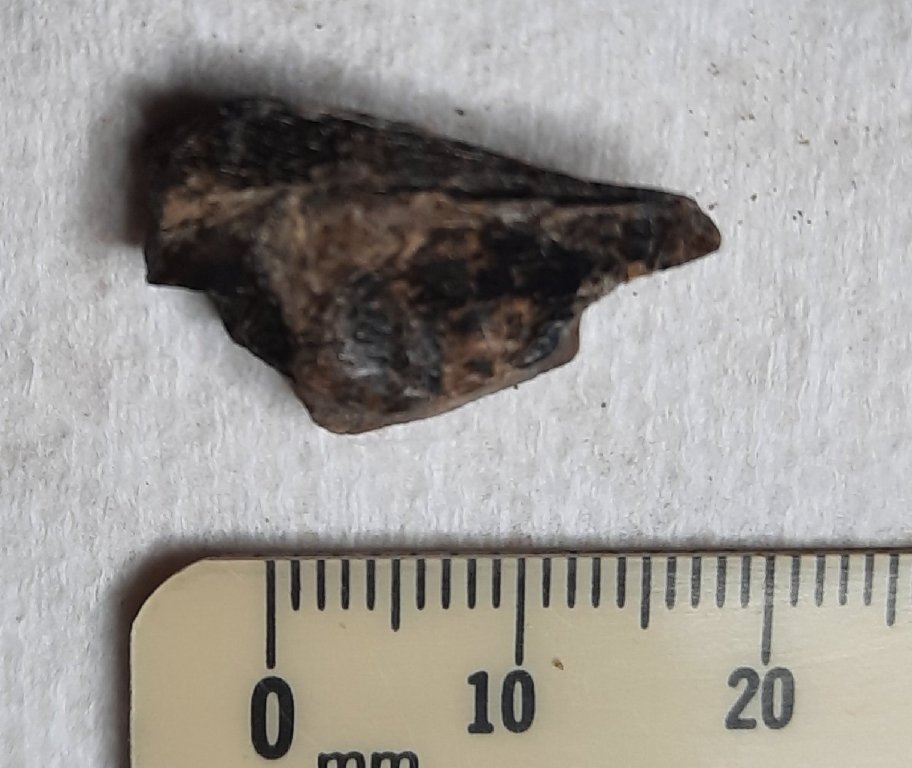

These two small fish verts are the same size.

And the teeth. I love these first two teeth. These are the smallest Lamniform teeth I’ve ever found with the cusplets intact. I didn’t realize it until I got it under the microscope, but this first tooth actually has double cusplets on both sides.
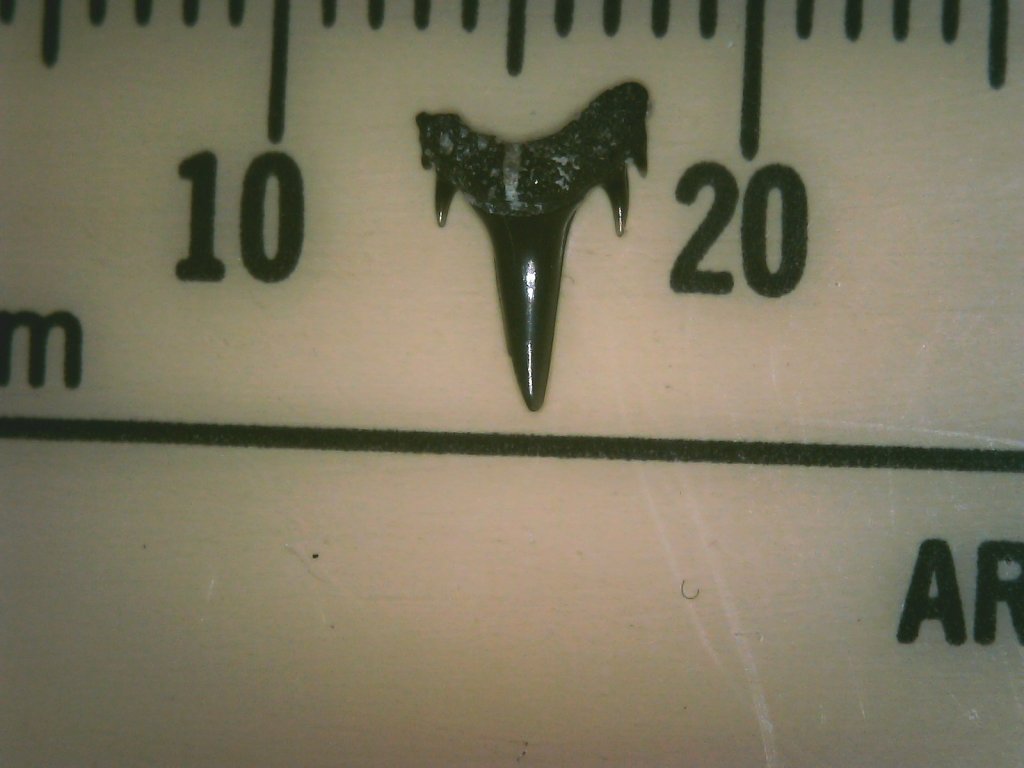
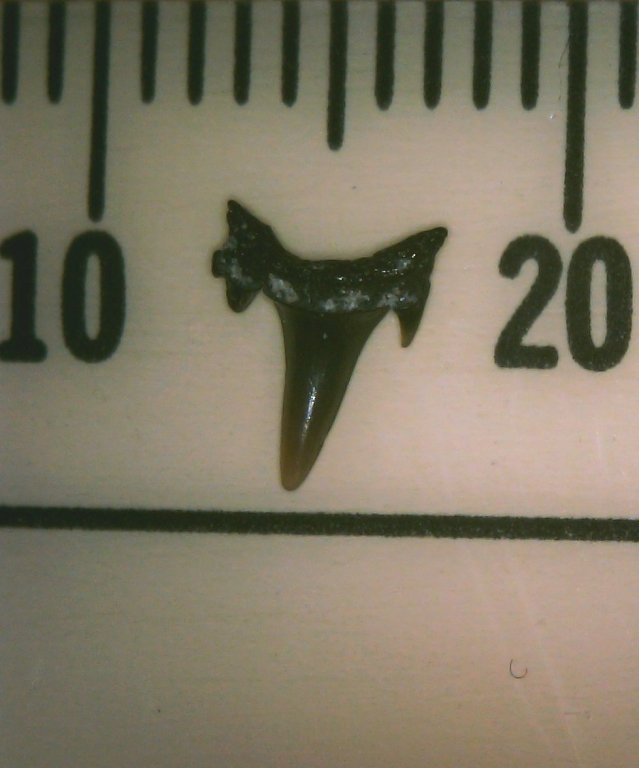
Most of the Squalicorax teeth I found yesterday were broken, but there were a few in better shape. I do believe this first one is the biggest Squalicorax I’ve found.
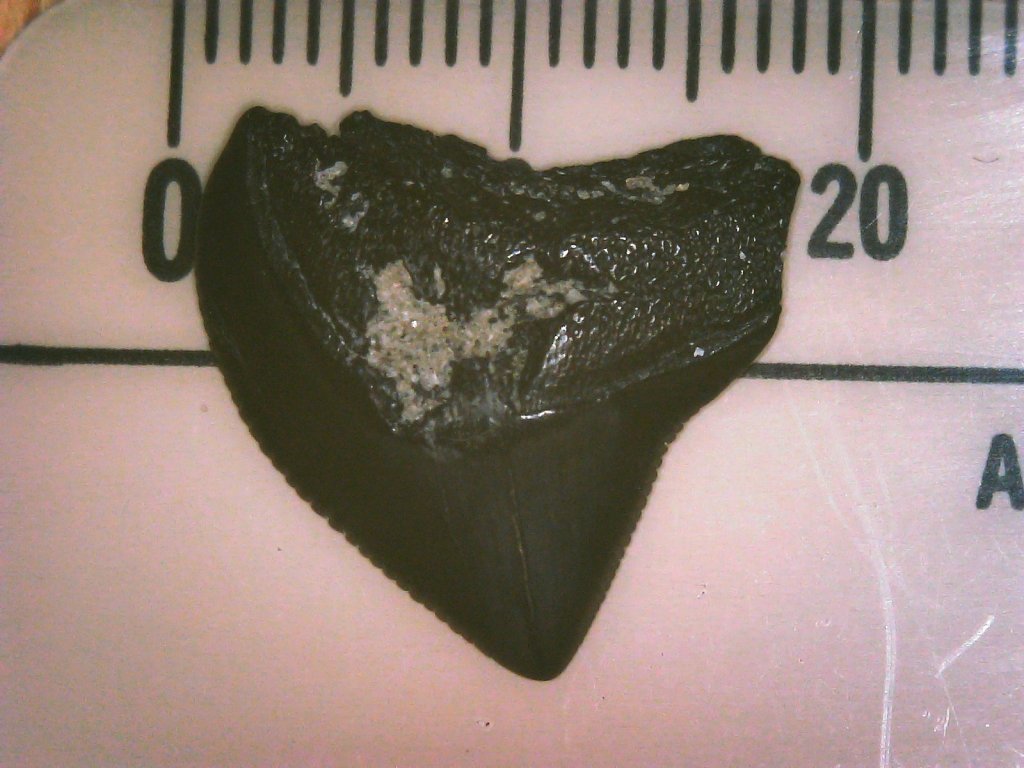


Yesterday’s Lamniform teeth weren’t very large. Here are the biggest of the bunch.

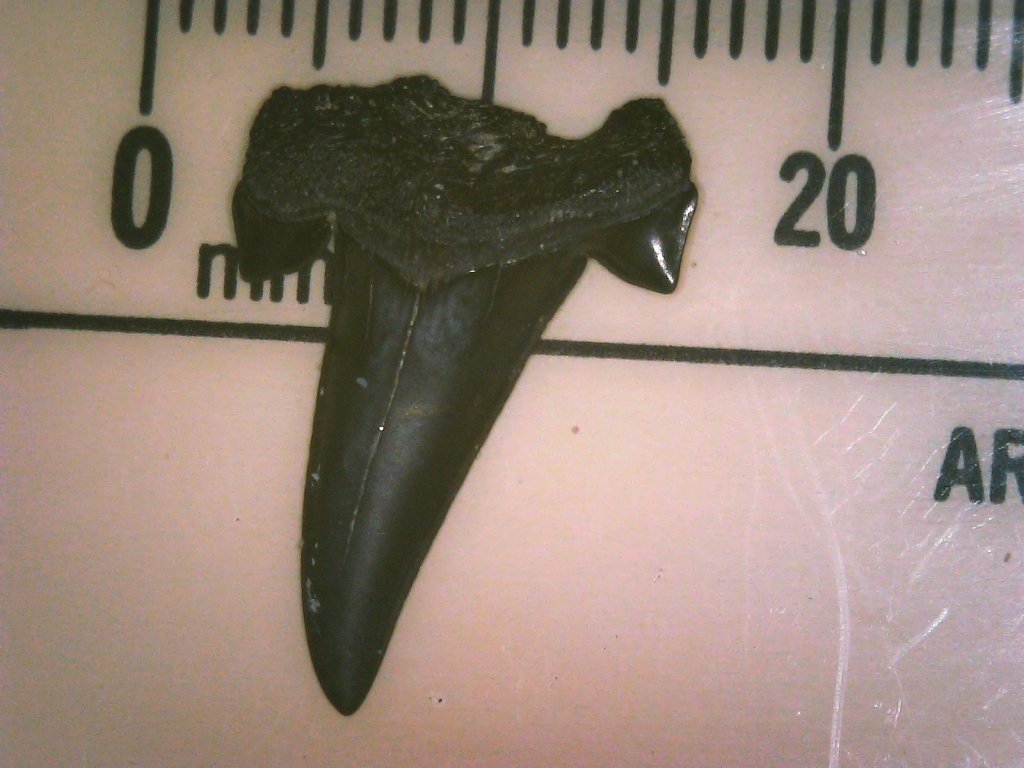
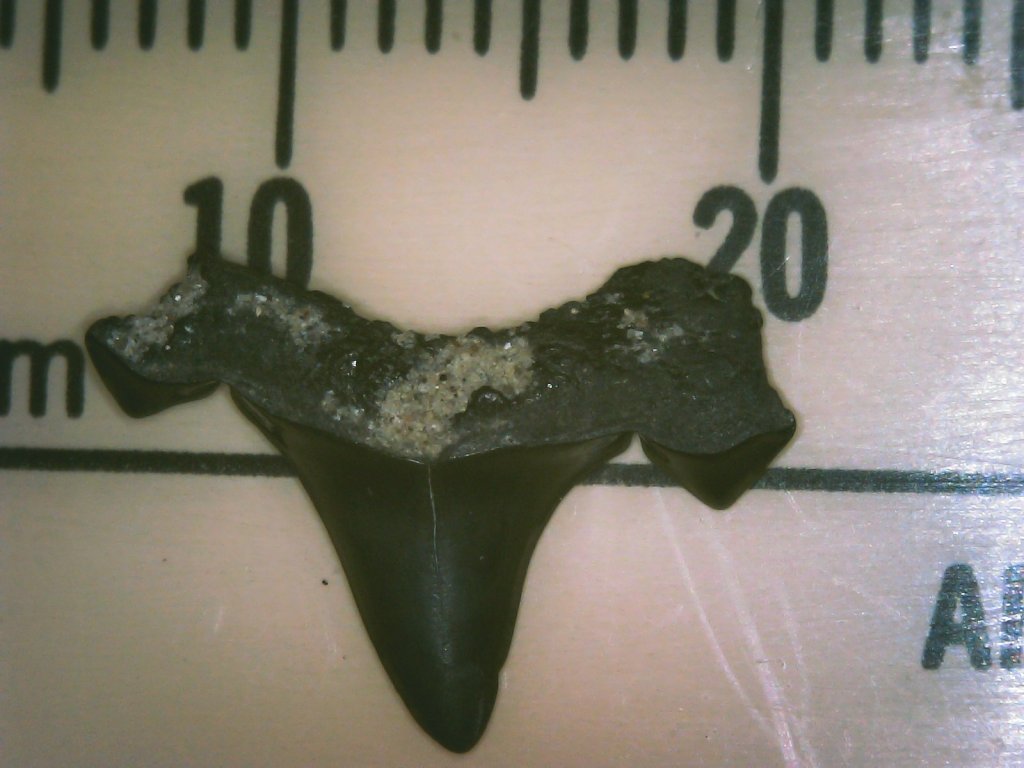
This tooth looked very unusual to me, as large as the cusplets are, compared to the main cusp.

Other teeth. This first one is the smallest tooth of the day.

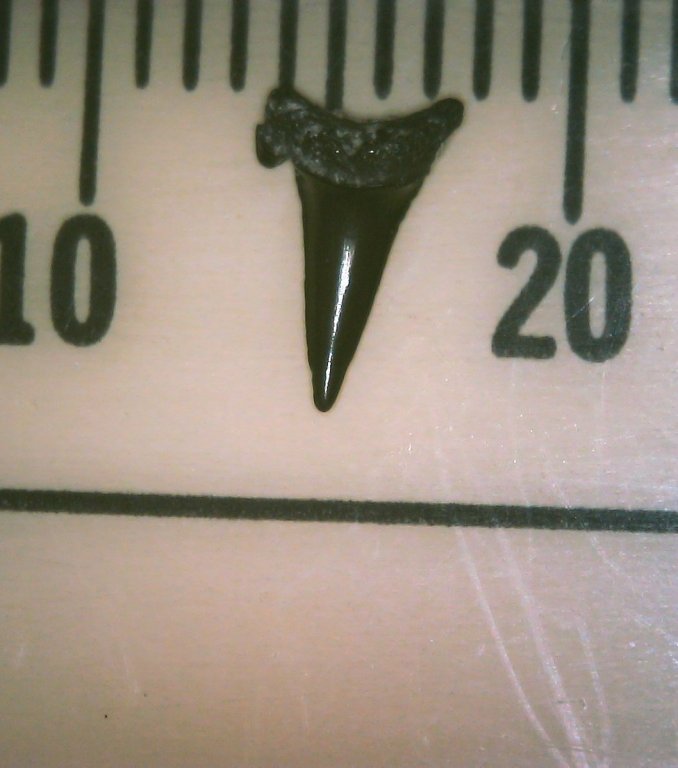
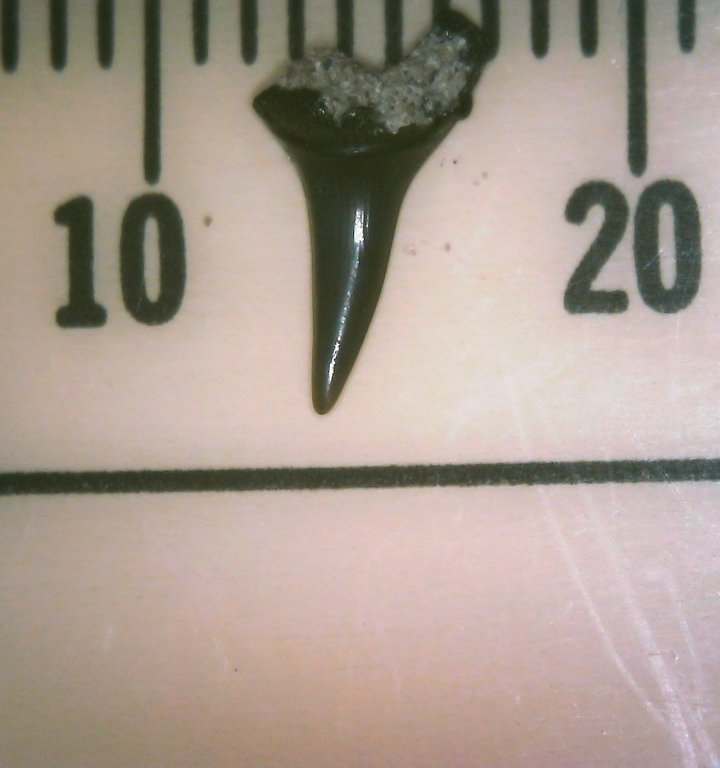

East Texas Creek, October 12th
On Tuesday, I made a trip back to the East Texas creek where I had found micro teeth last month. This creek is a Kincaid Formation outcrop. I had found the one and only productive area there just before I had to leave last time, so wanted to explore it better. Rain threatened the entire time I was there Tuesday, but it didn’t really rain hard until I had gotten back home.
Unlike my last time here, I found very little soft matrix on top of the limestone this time. At first, I wondered if it was just because our dry spell lately had hardened everything, but the more I explored, the more I came to realize that most of the softer matrix had just already been chiseled off. It’s a reminder of how hard it is to find spots that aren’t over hunted here in Texas. I didn’t find many teeth at all this time, but brought home some suspicious matrix from where I did find a few teeth. I just finished going through that matrix, and sure enough, it did have a few more teeth in it. Here is what I got from the trip, including what I found in the matrix. Click the photos to be able to zoom in and get a closer look.

There were shell fragments everywhere in the matrix, but this looked very different from most. It looks like it might be from a crab.
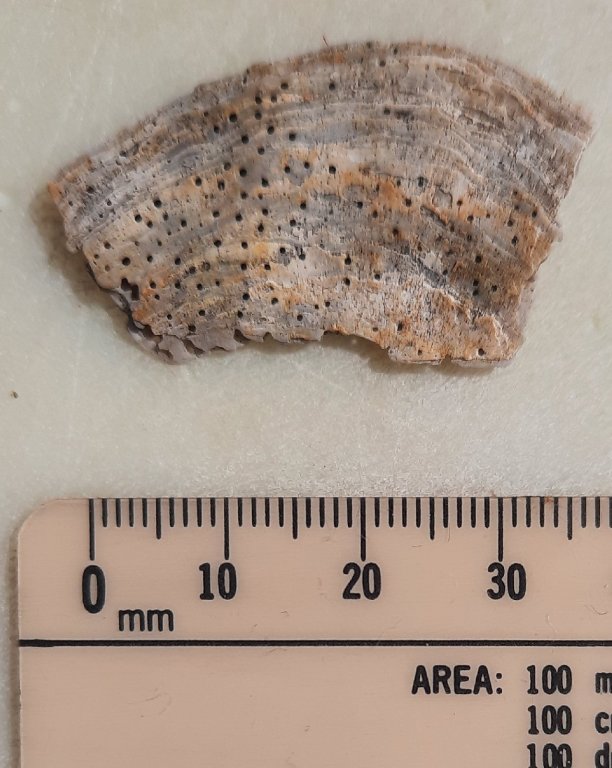
Here are some individual tooth photos.


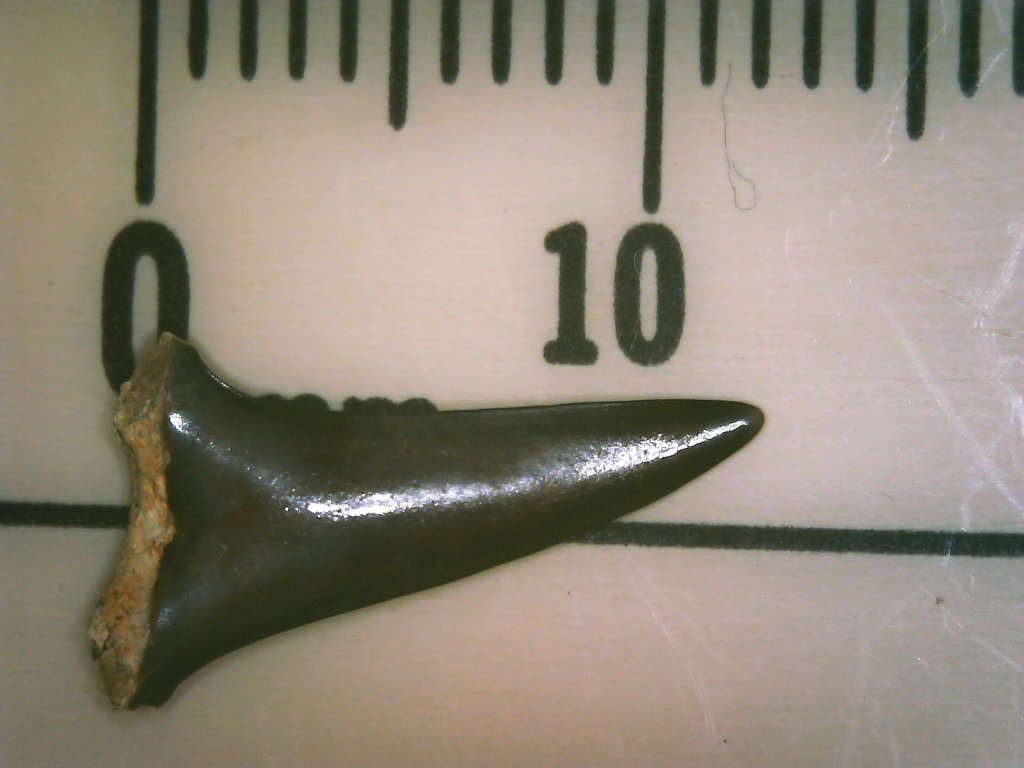
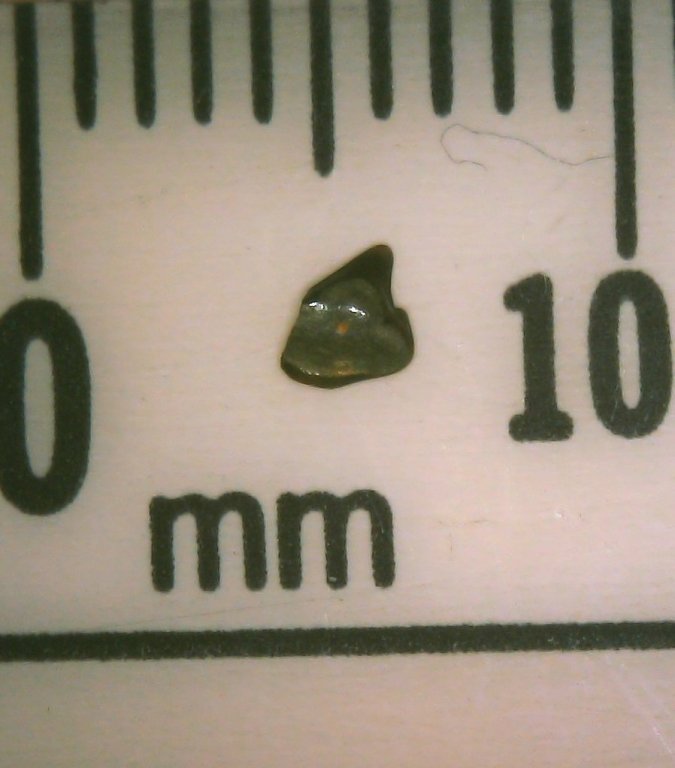
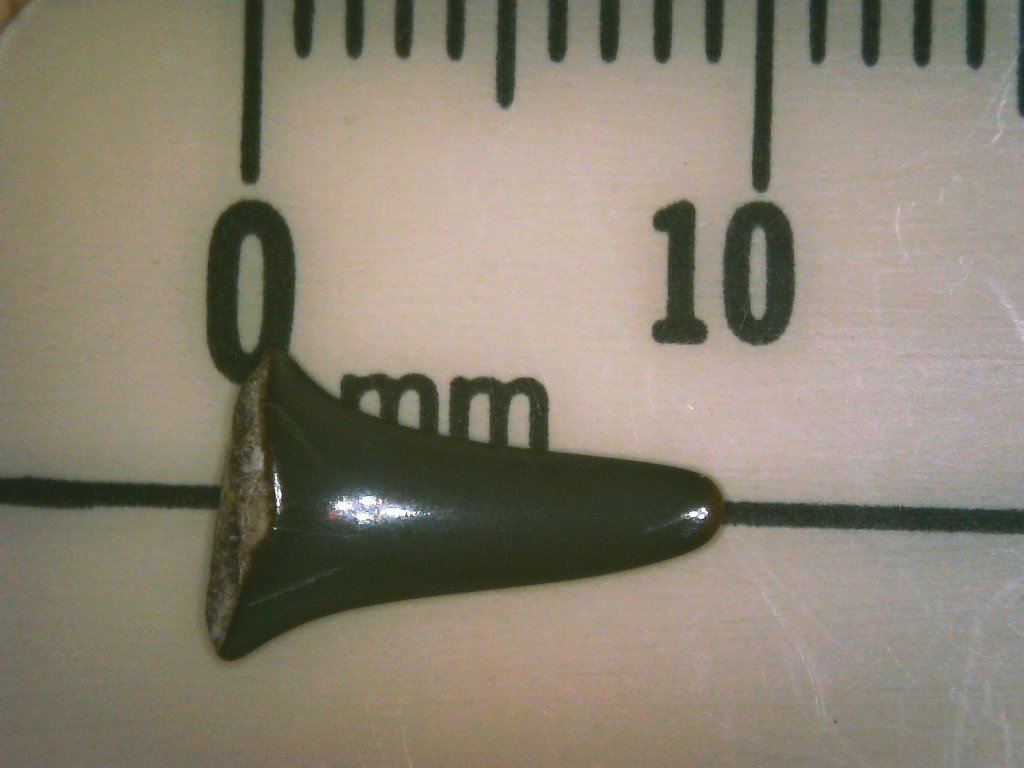
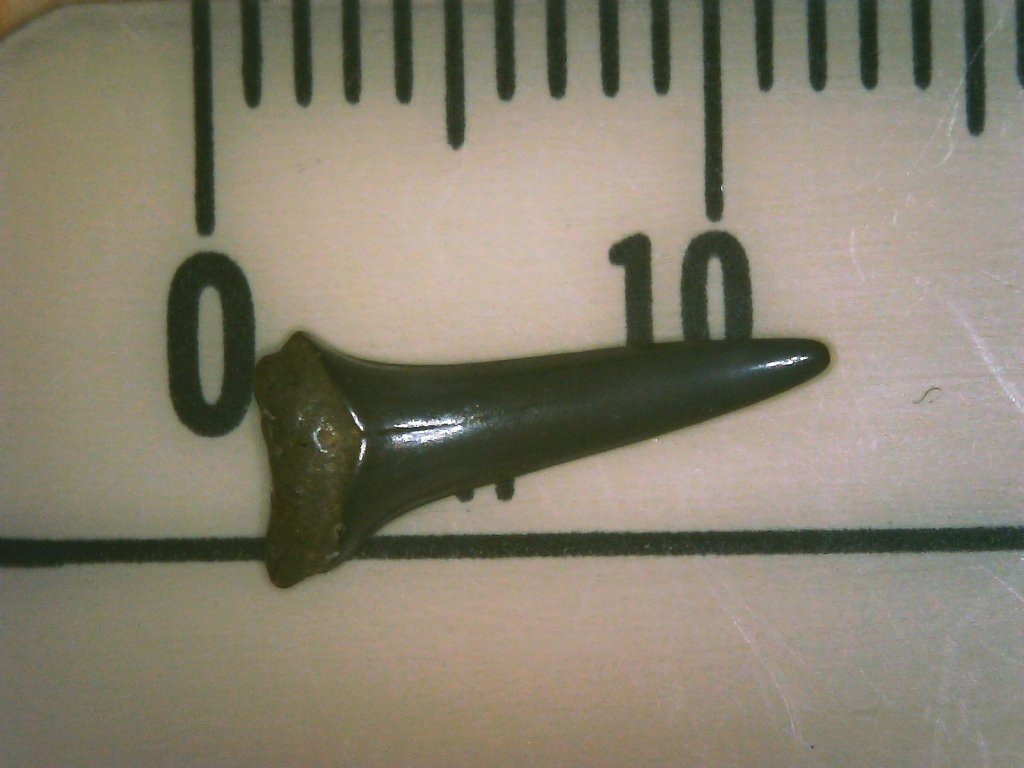
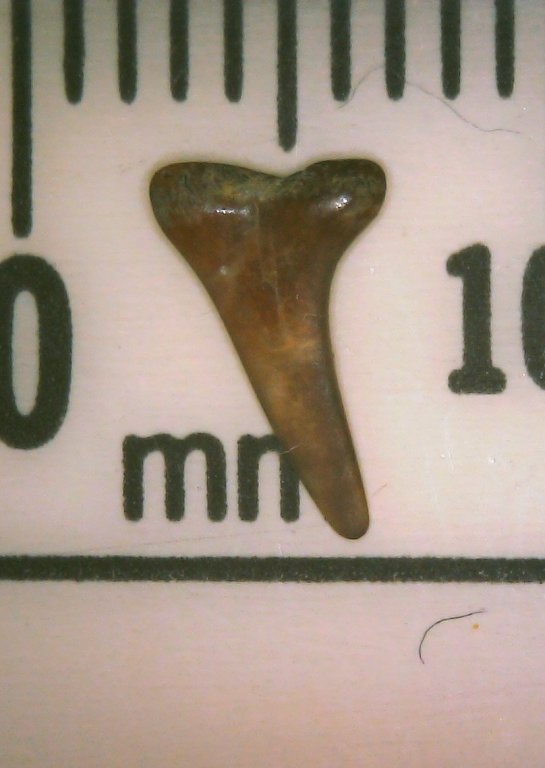
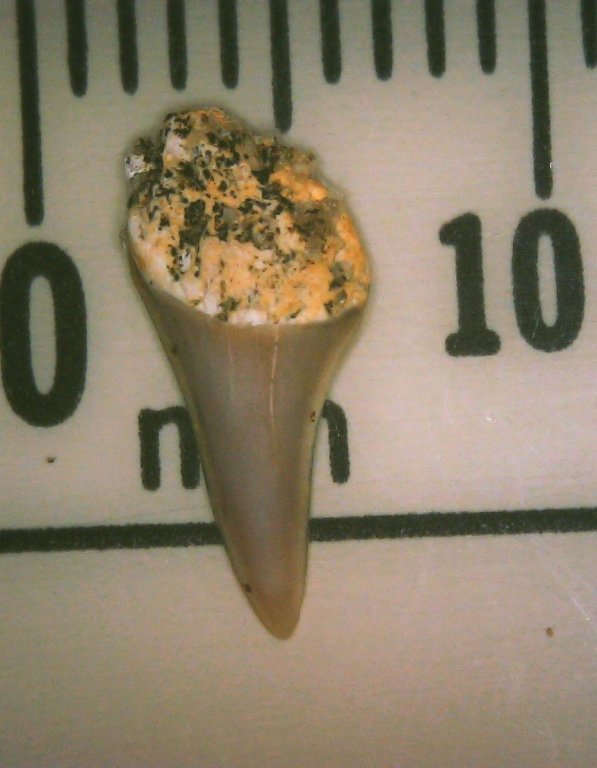
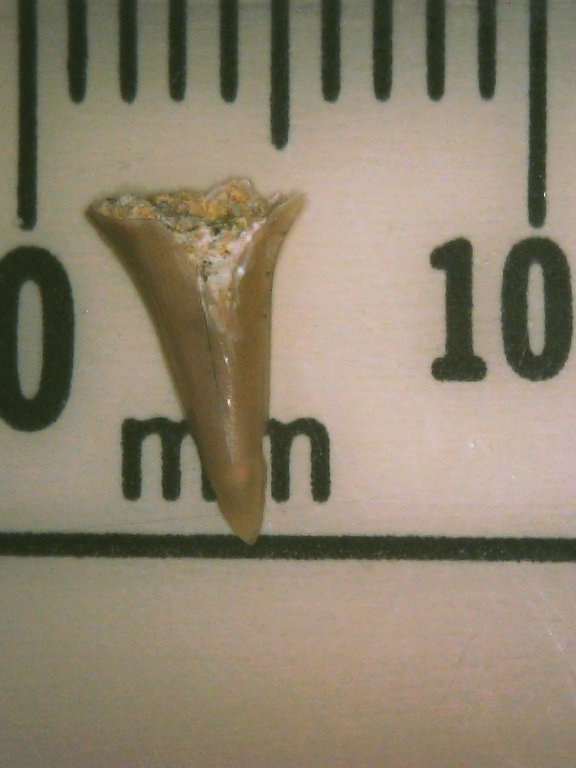
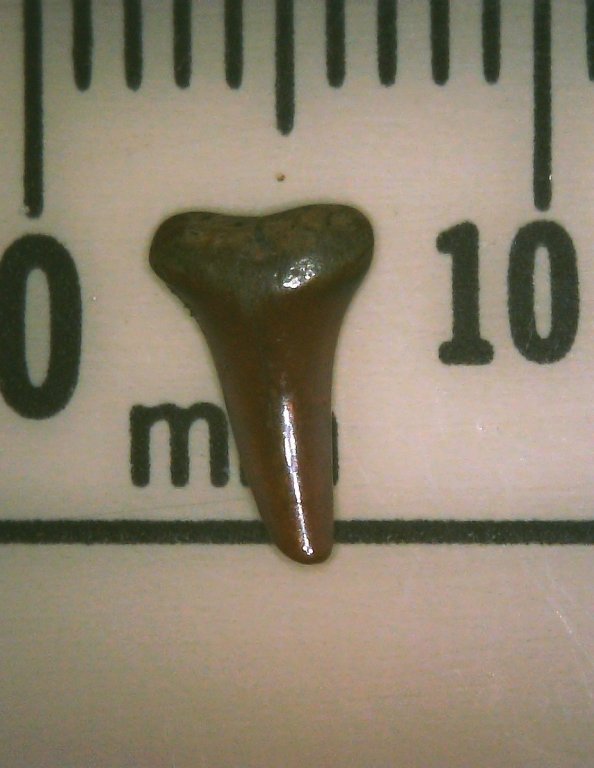
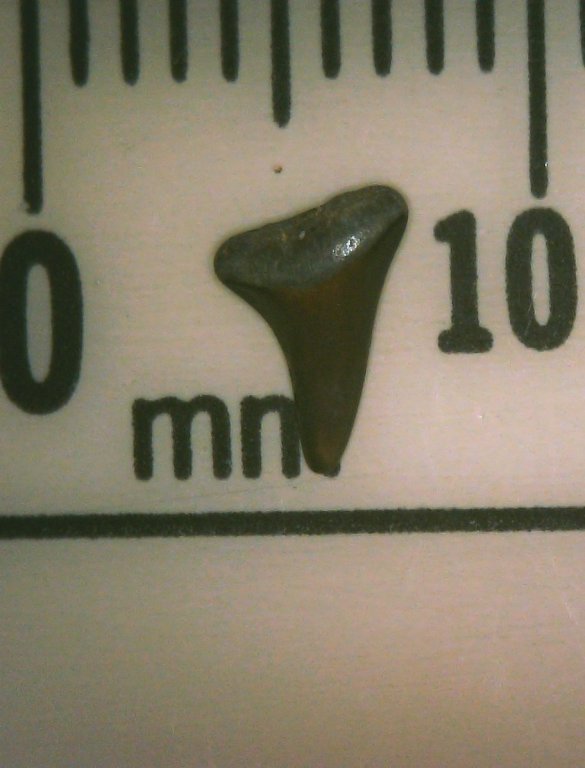
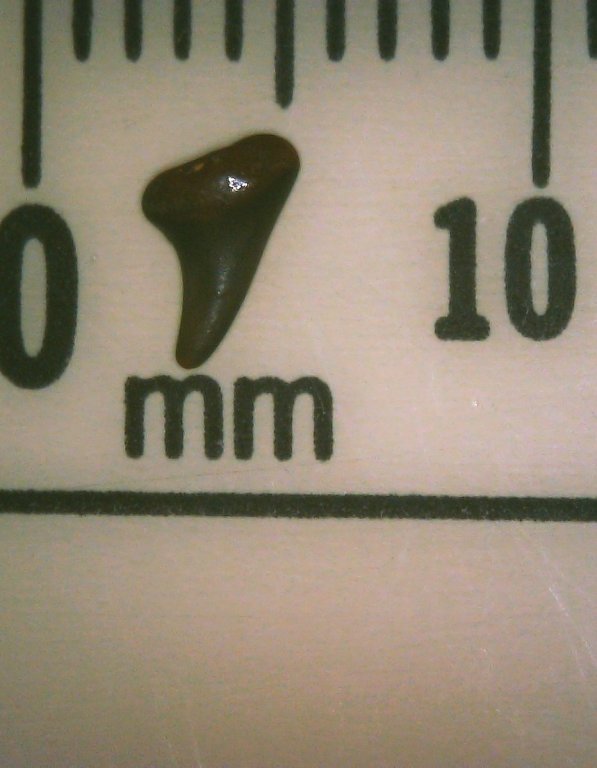
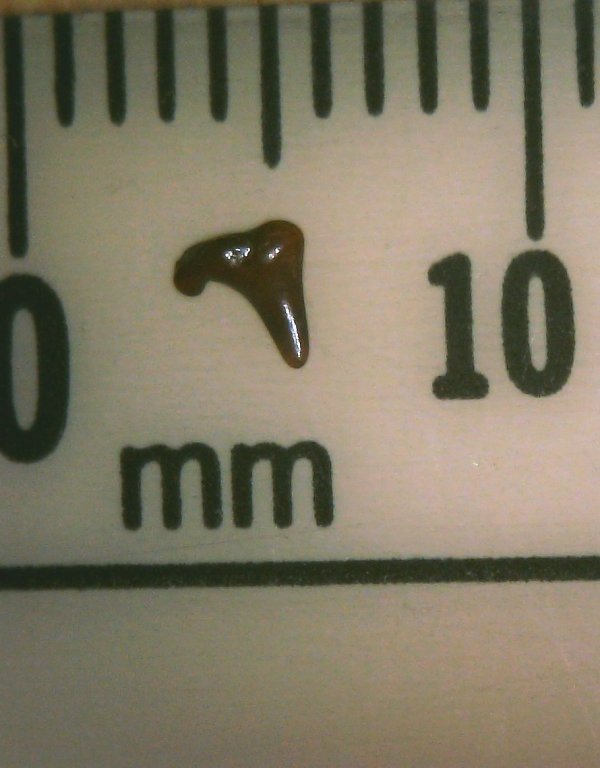 >
>





